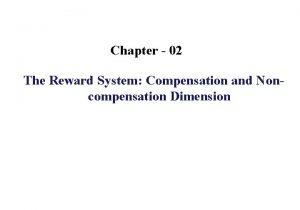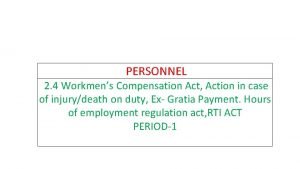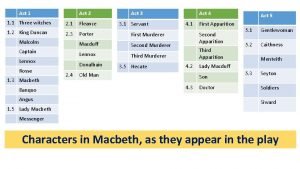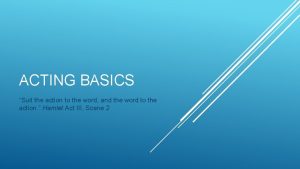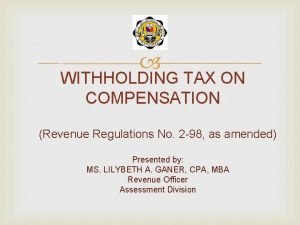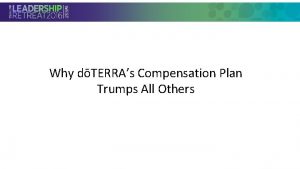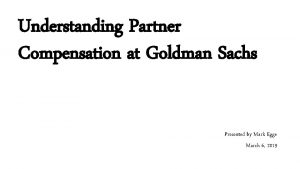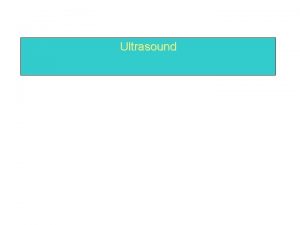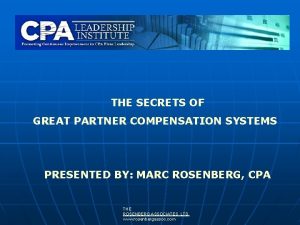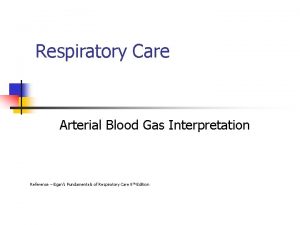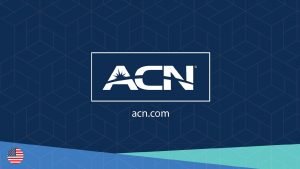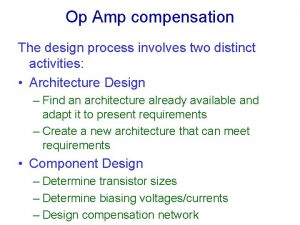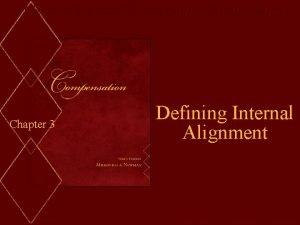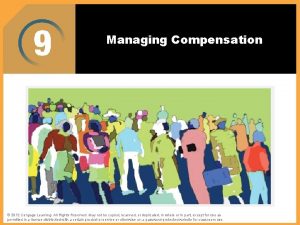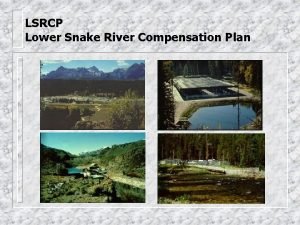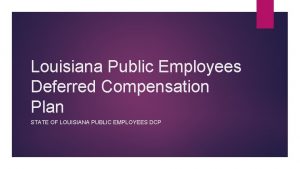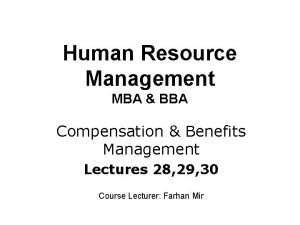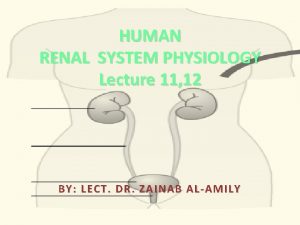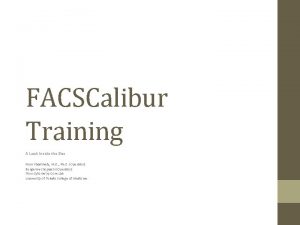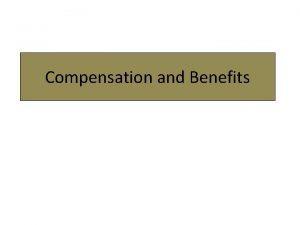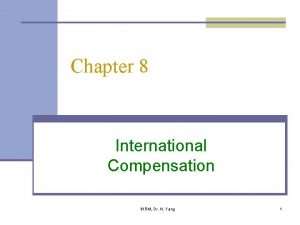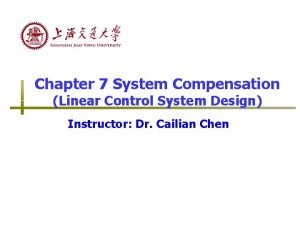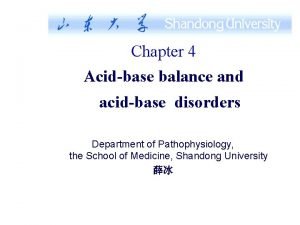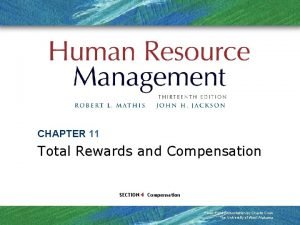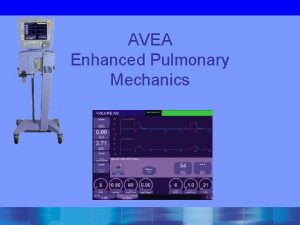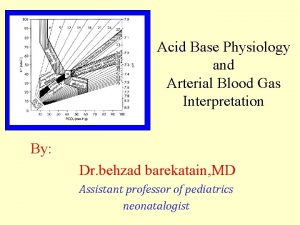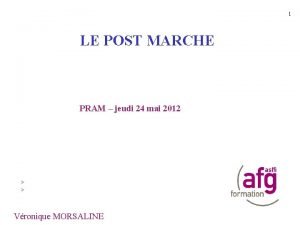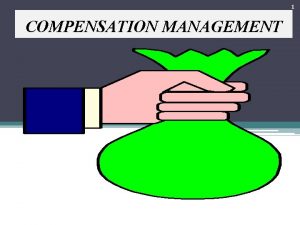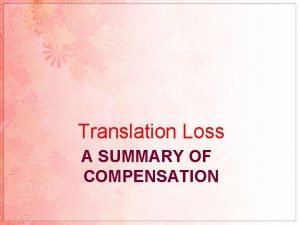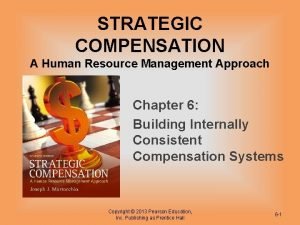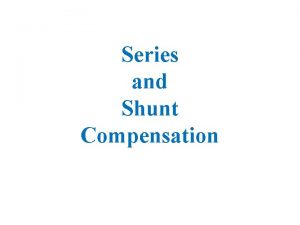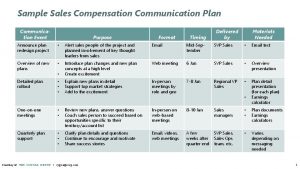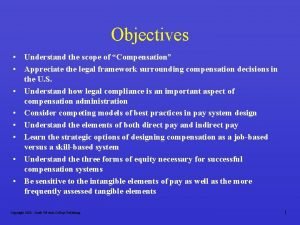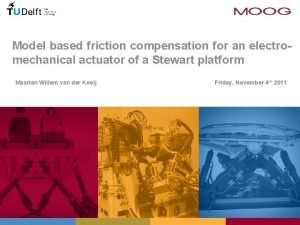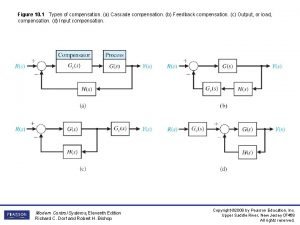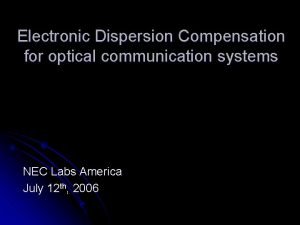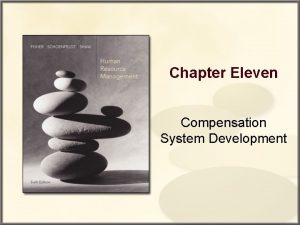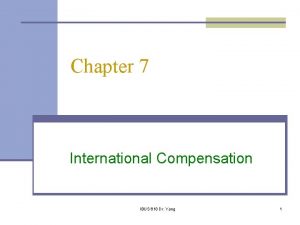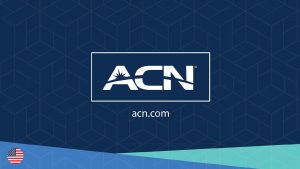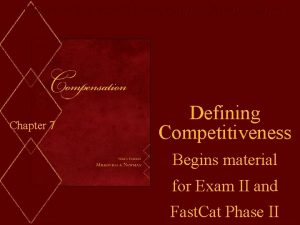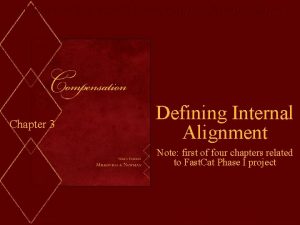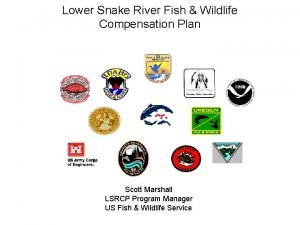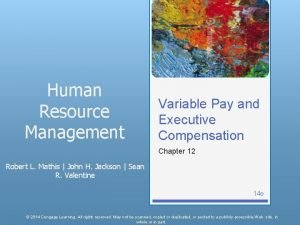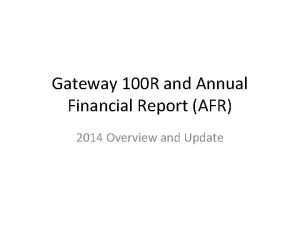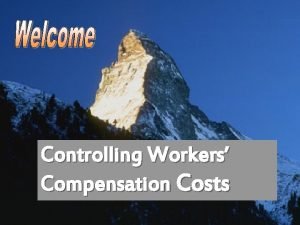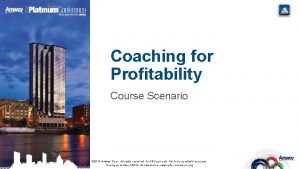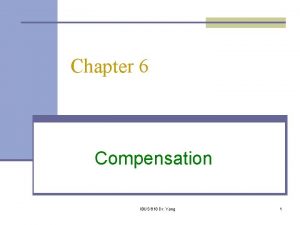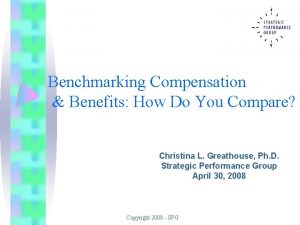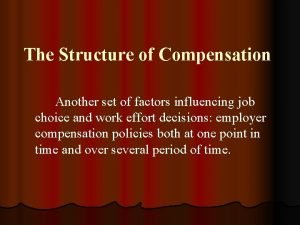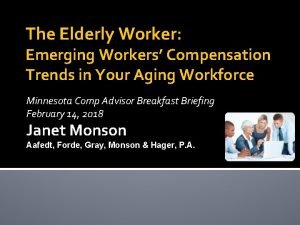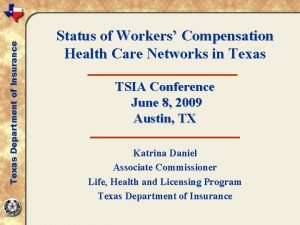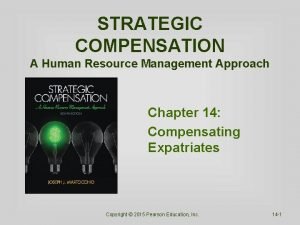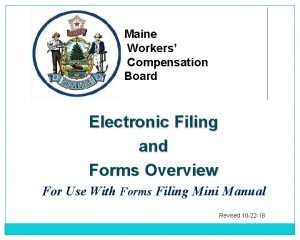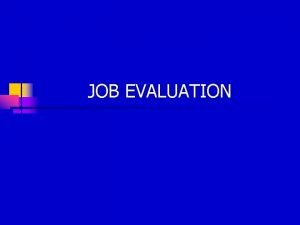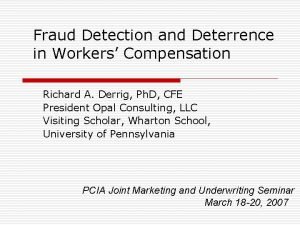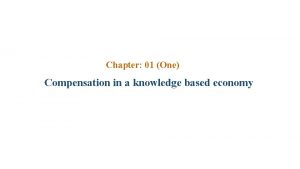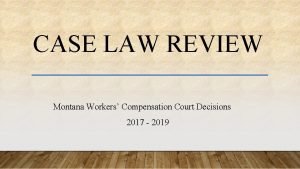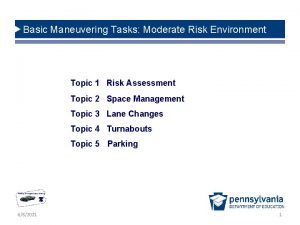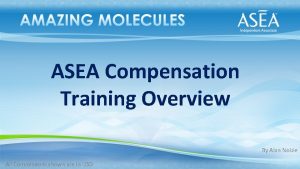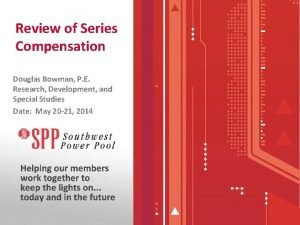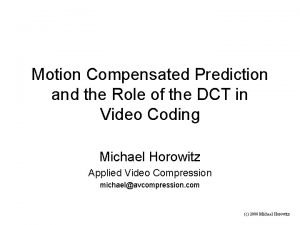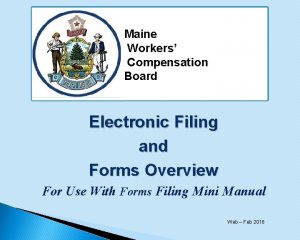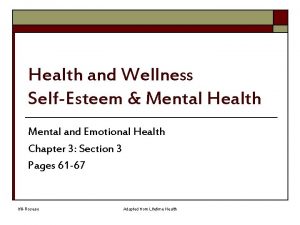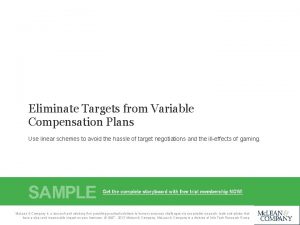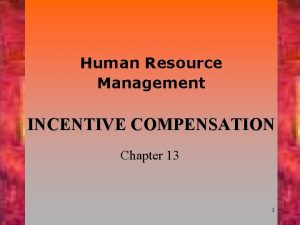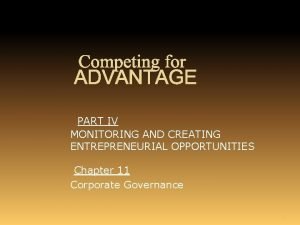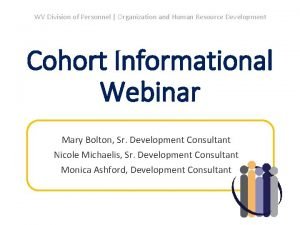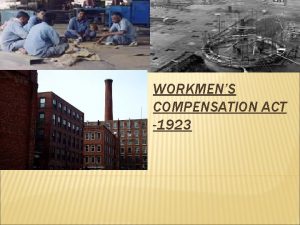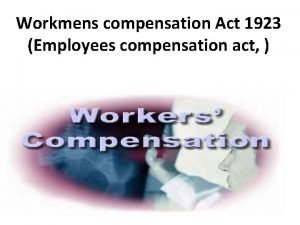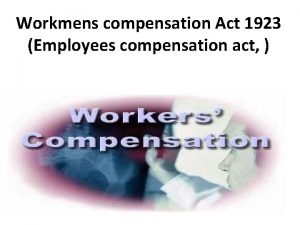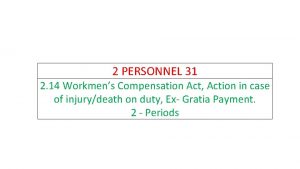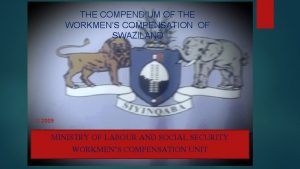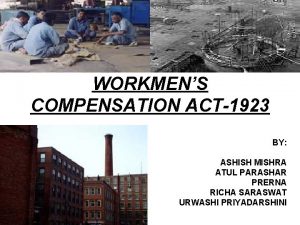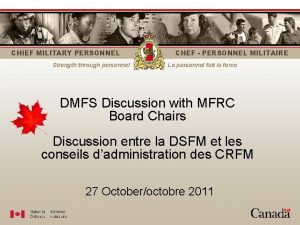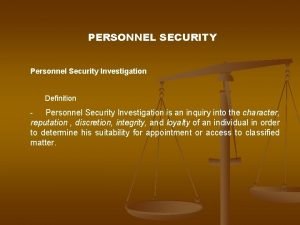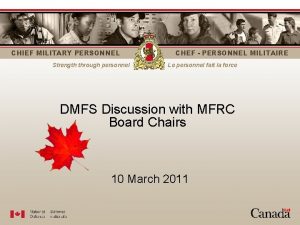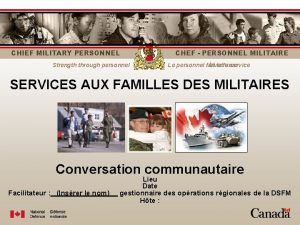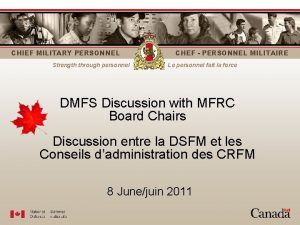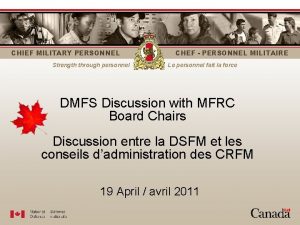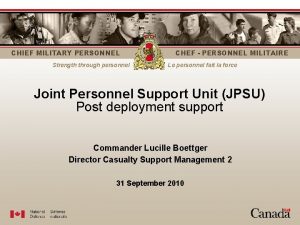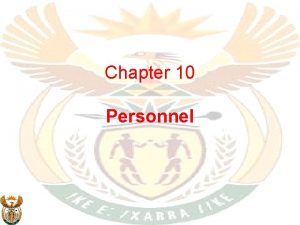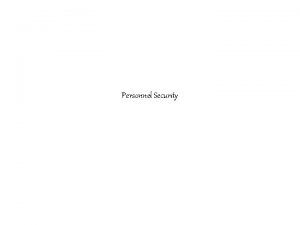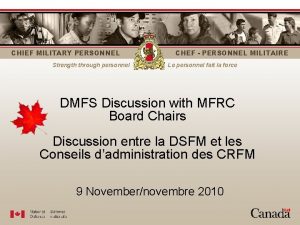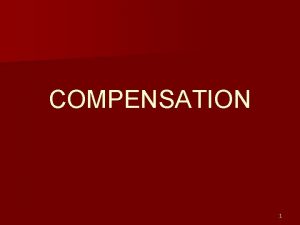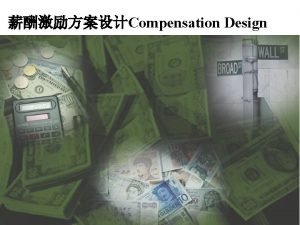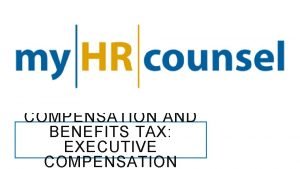PERSONNEL 2 4 Workmens Compensation Act Action in


















































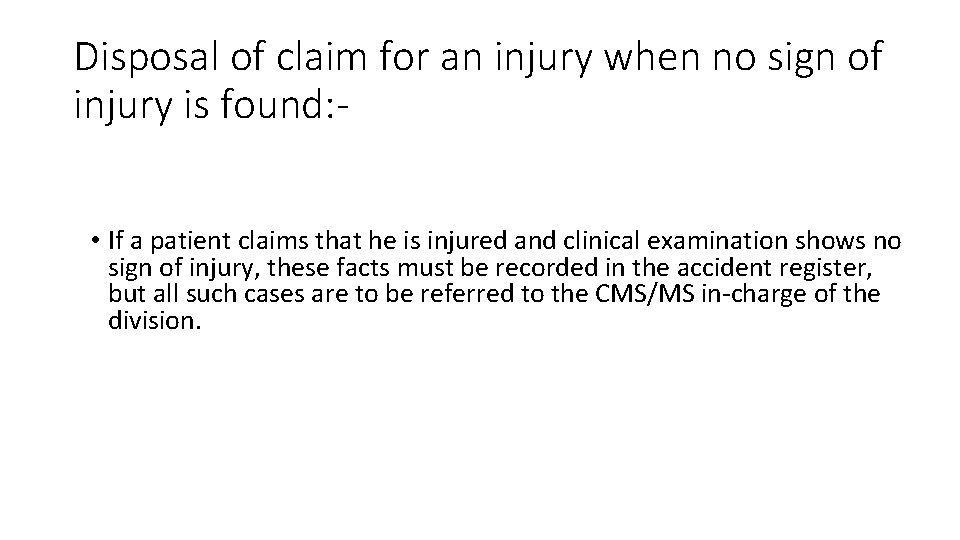
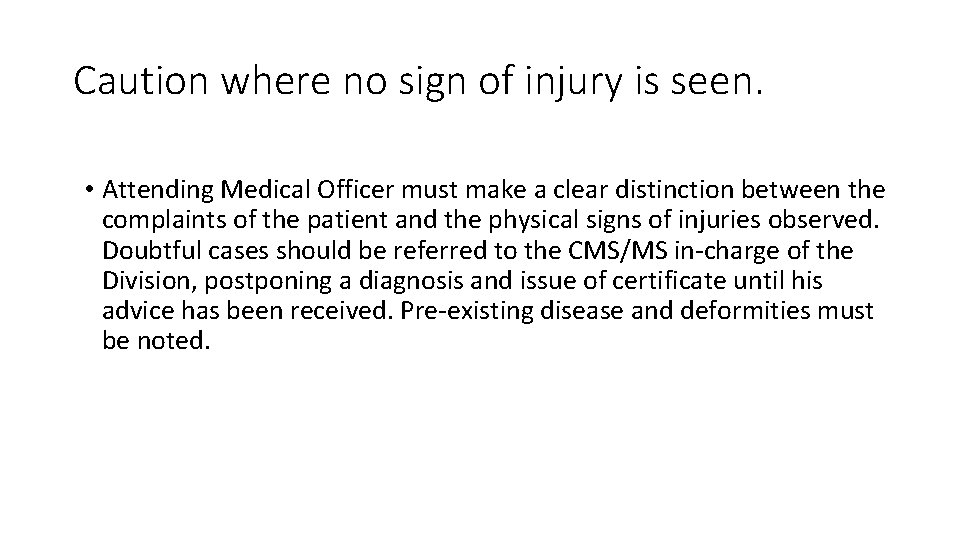
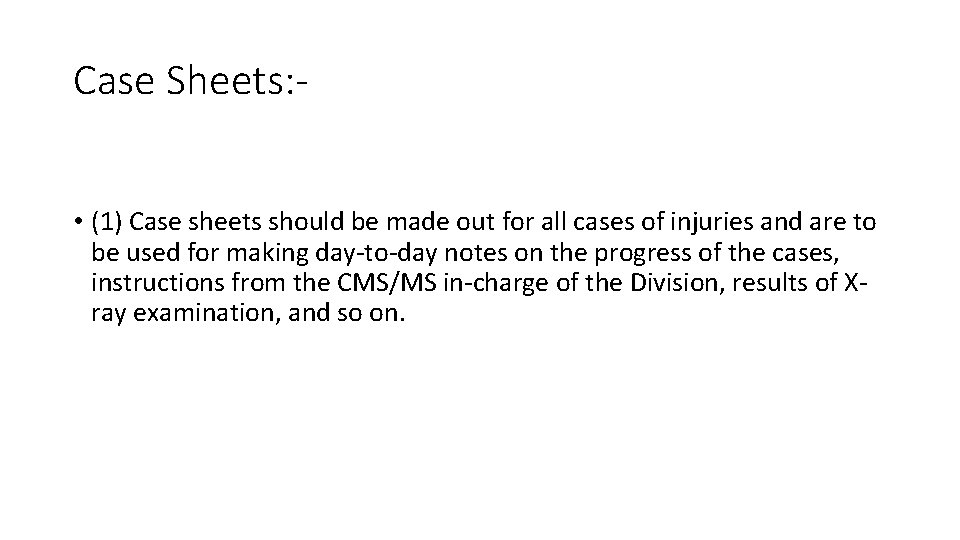
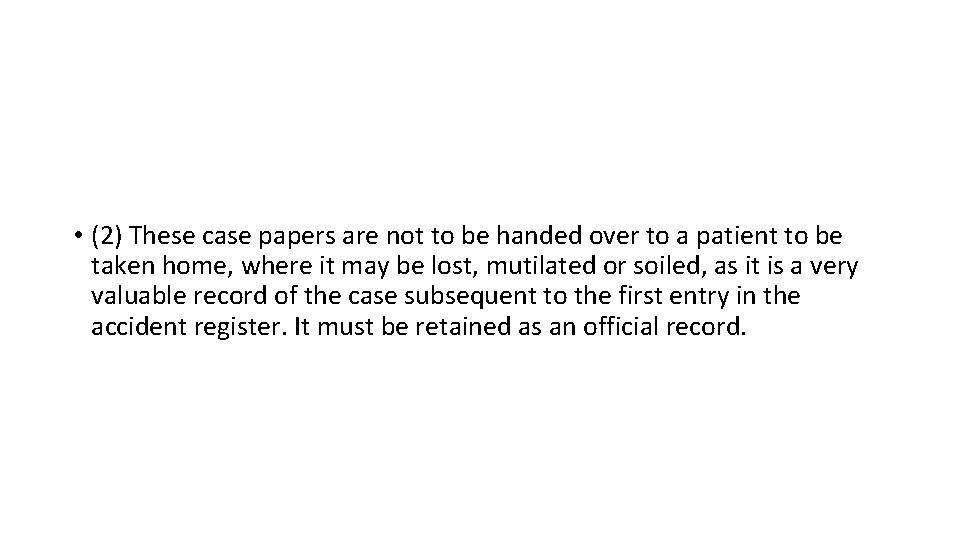
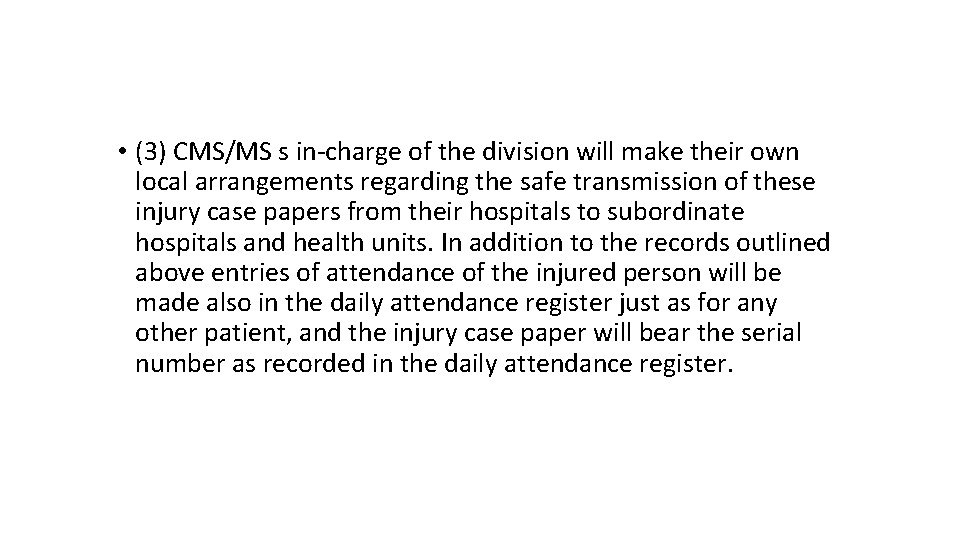
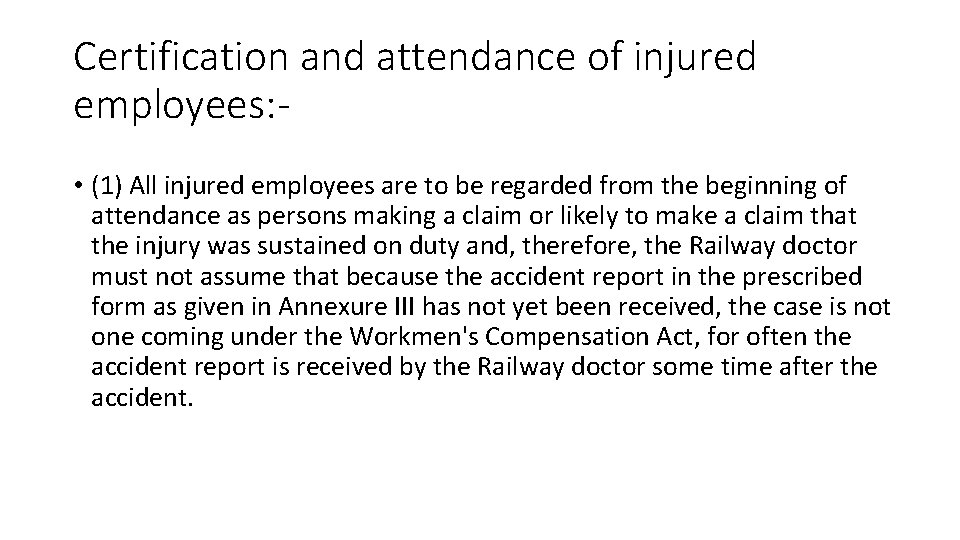
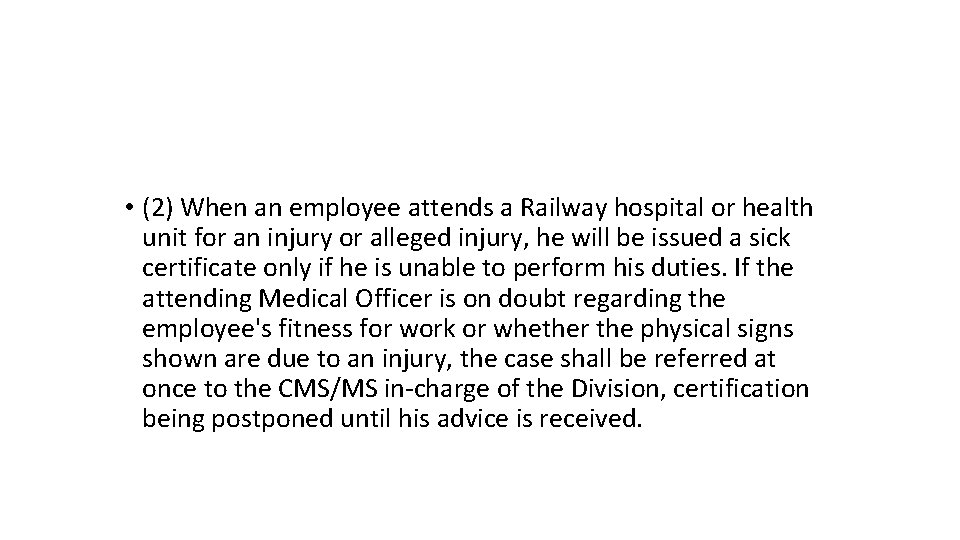
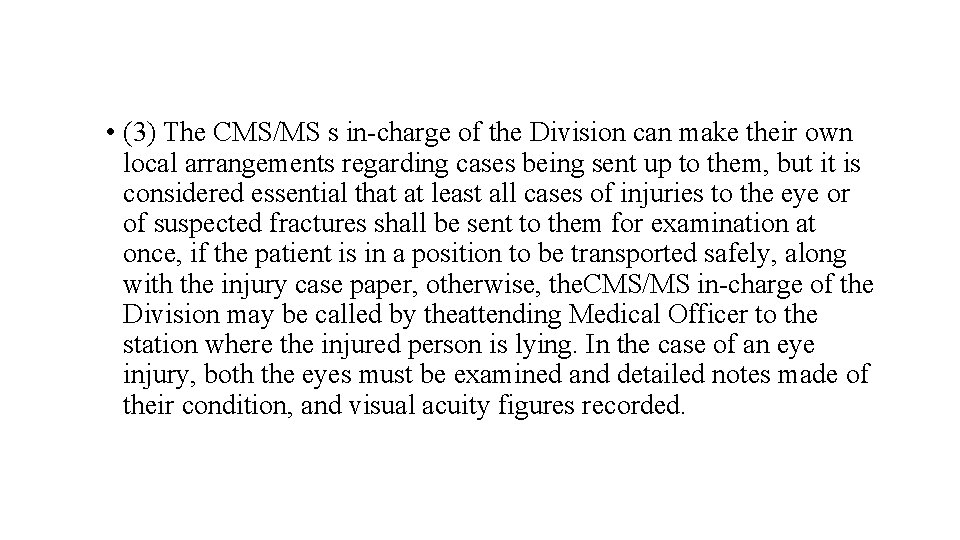
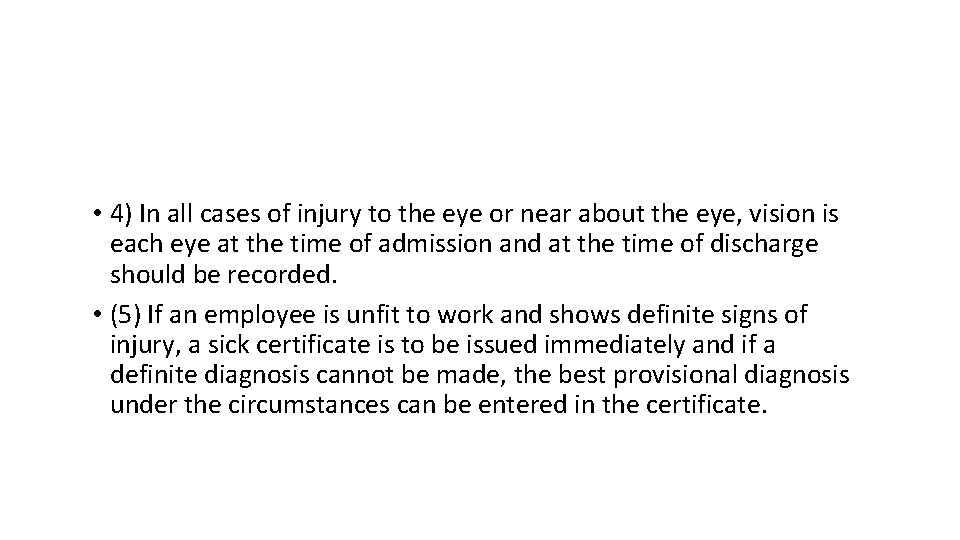
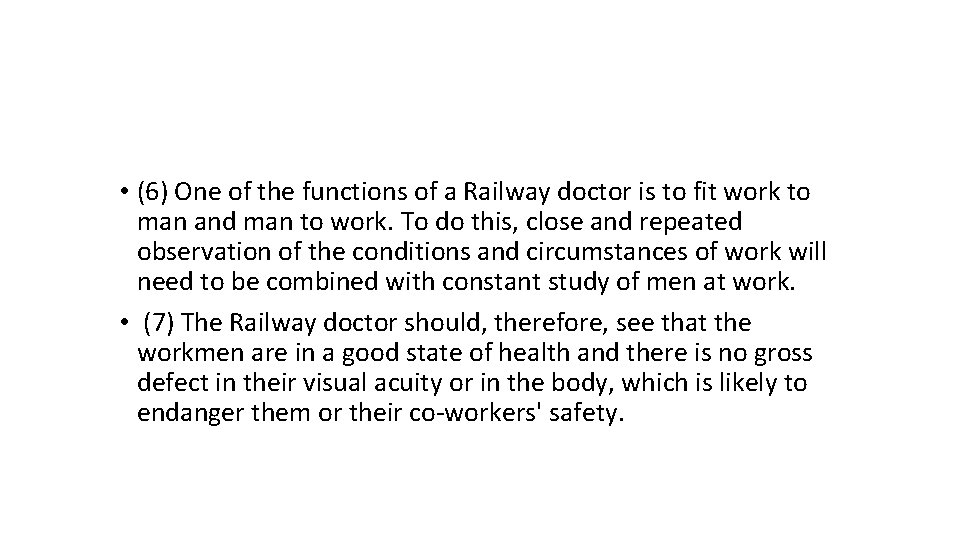
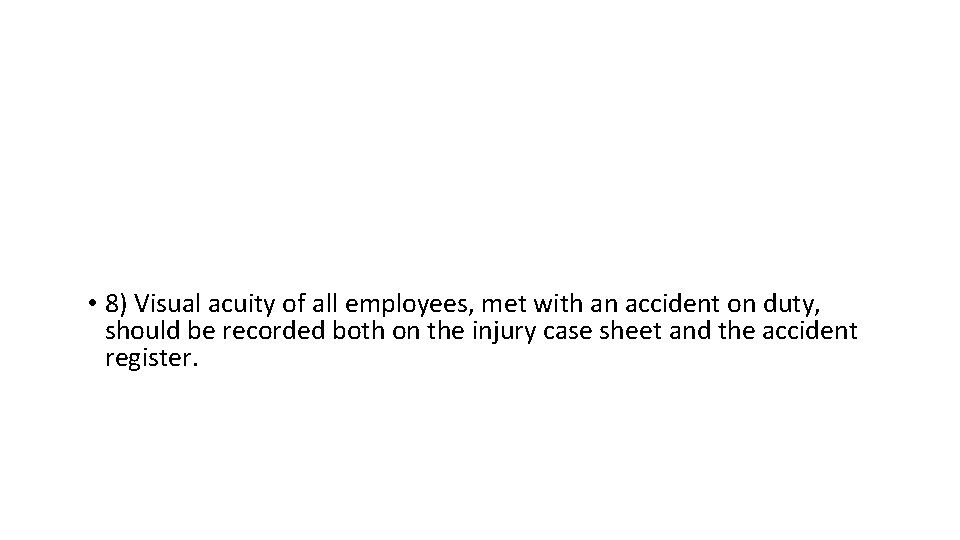
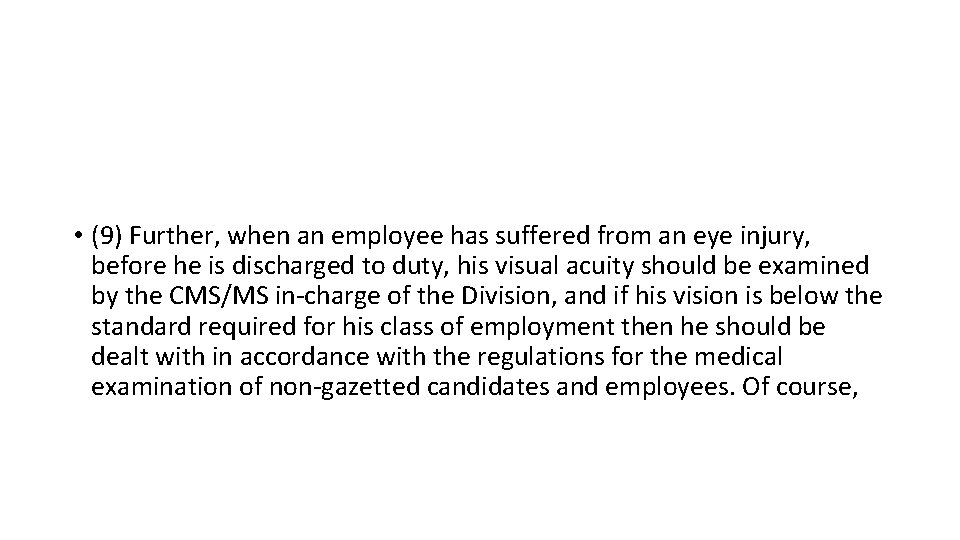
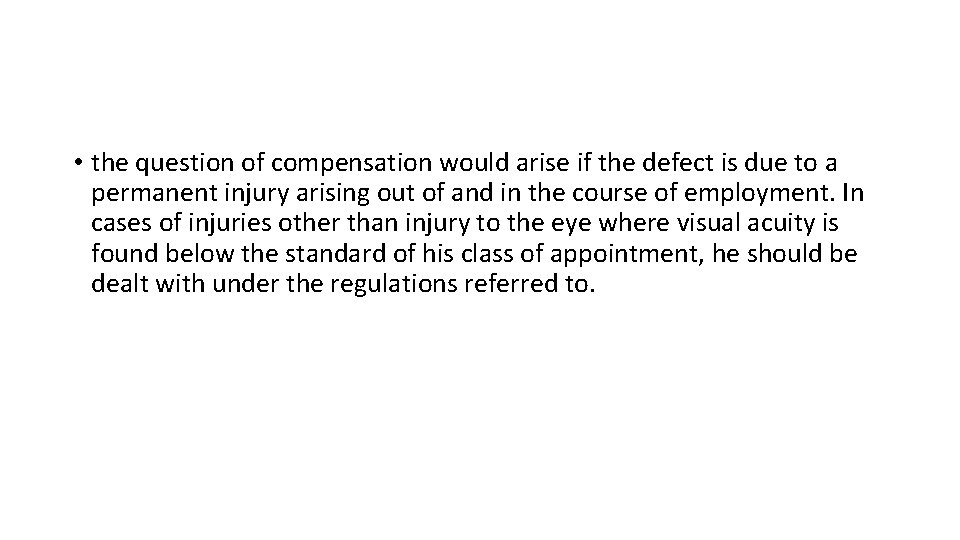
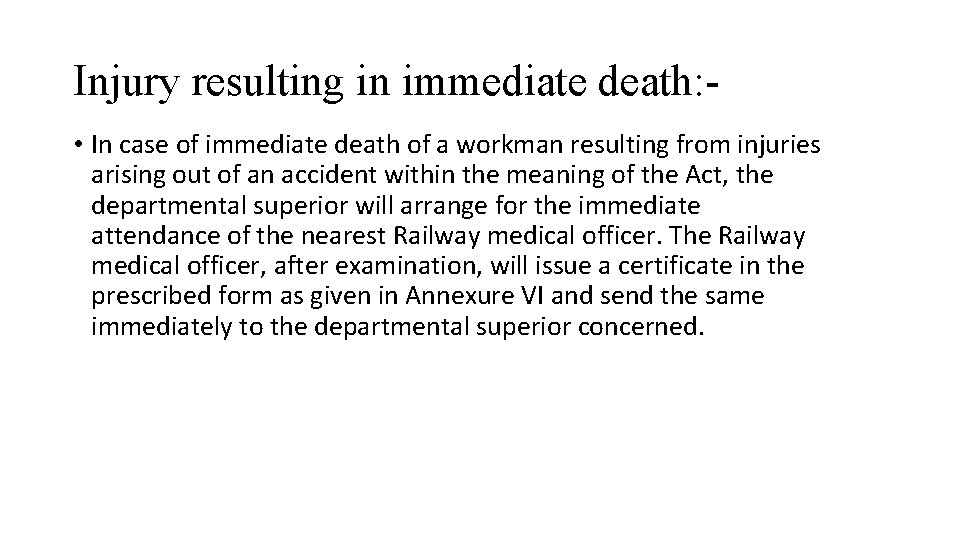
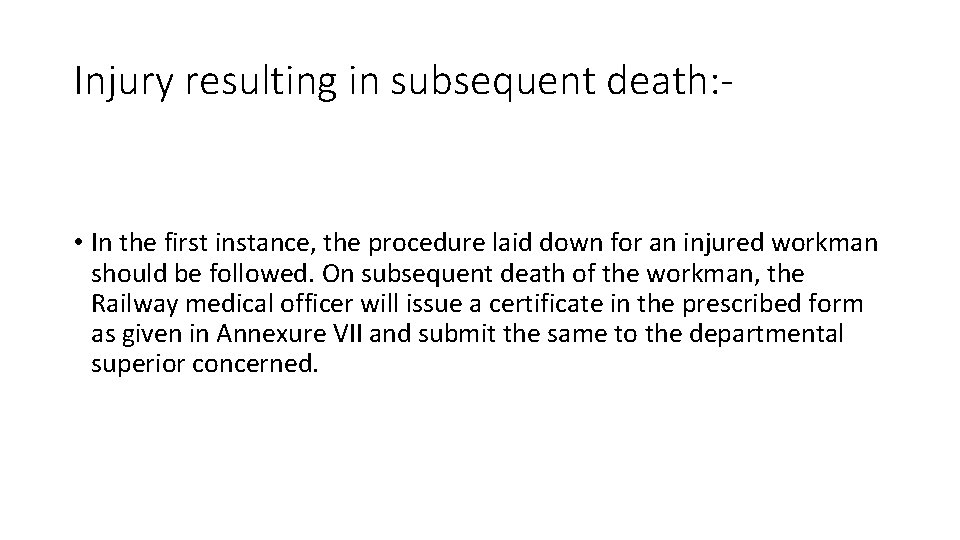
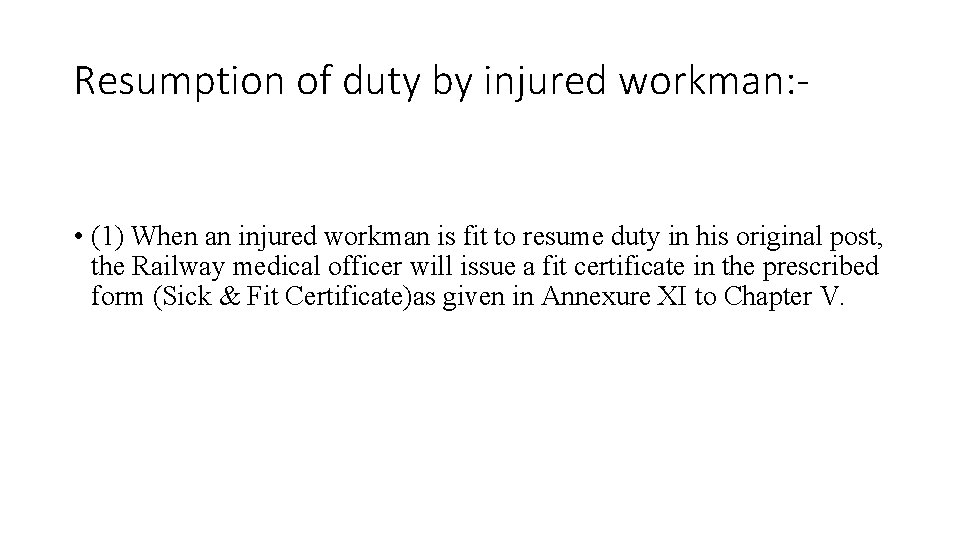
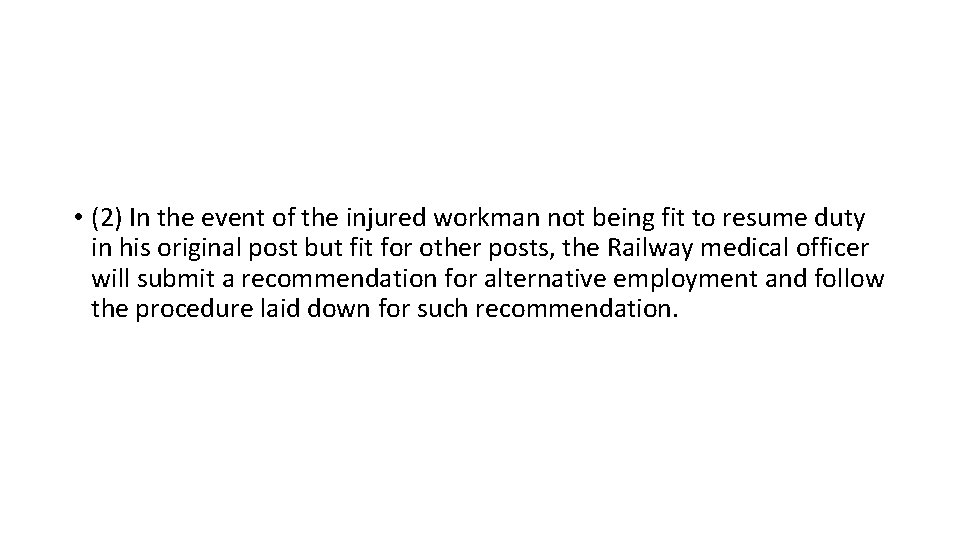
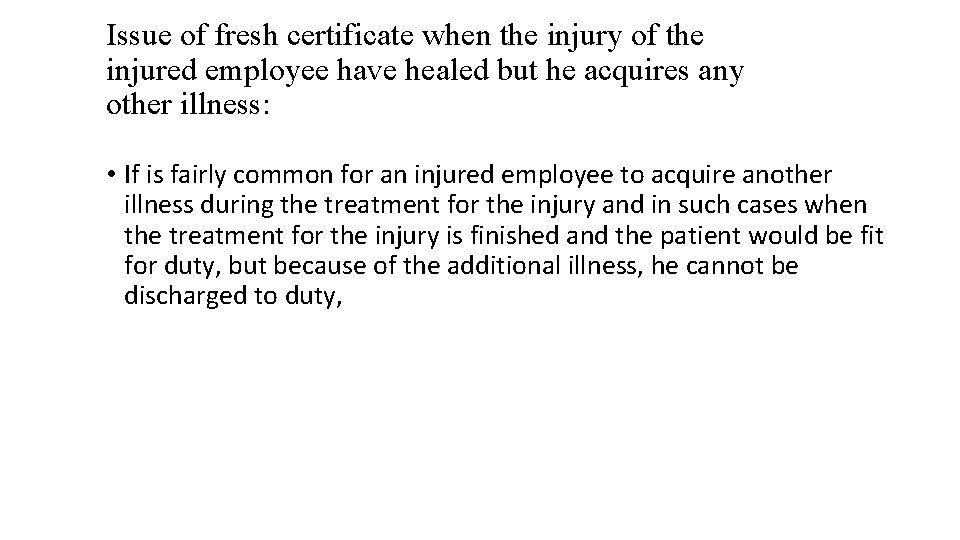
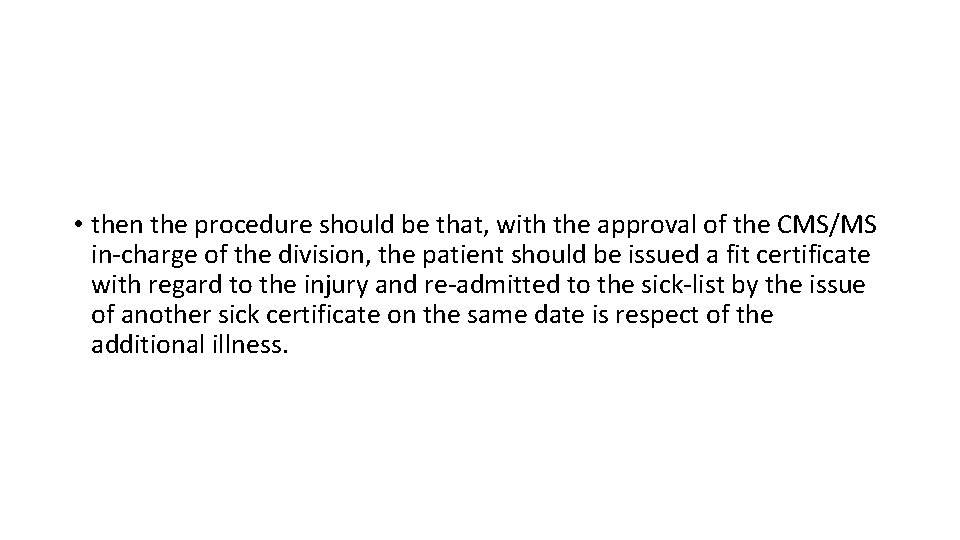
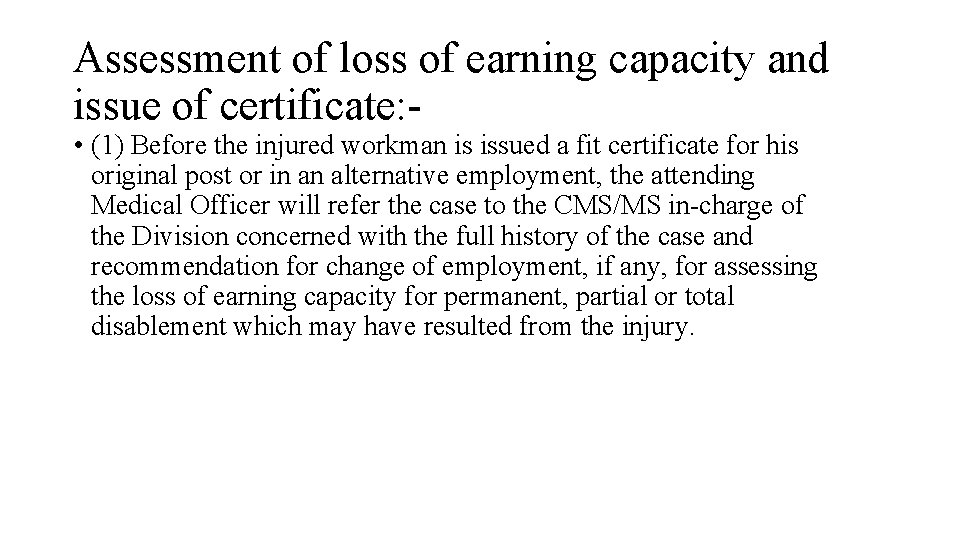
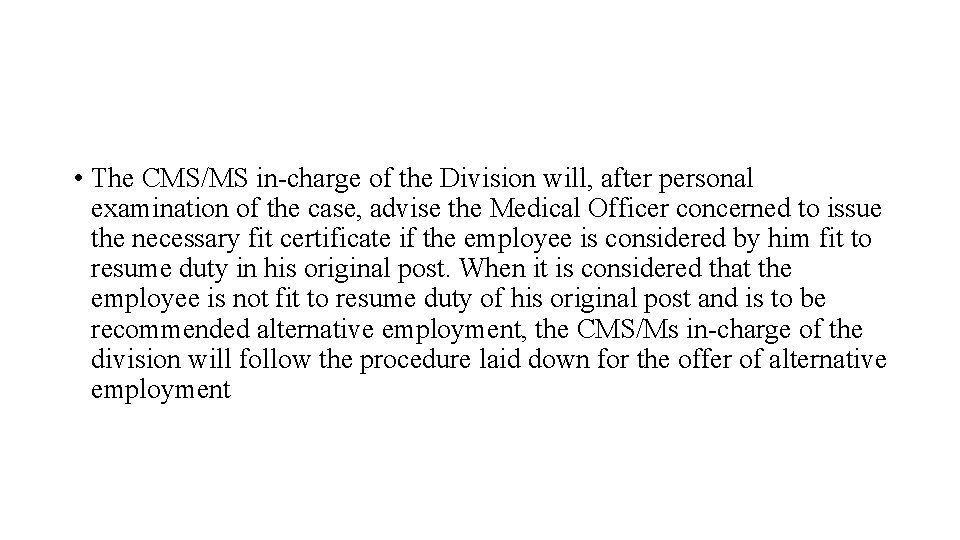
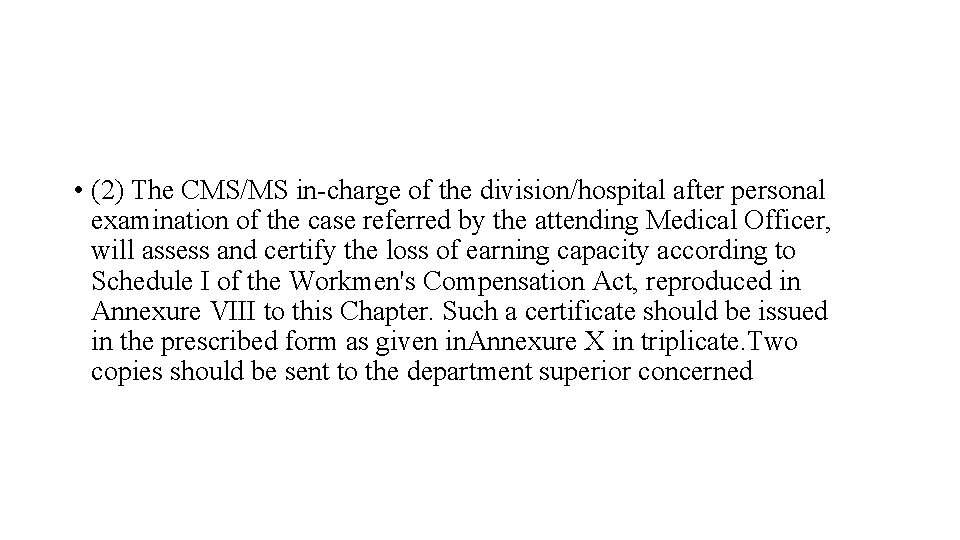
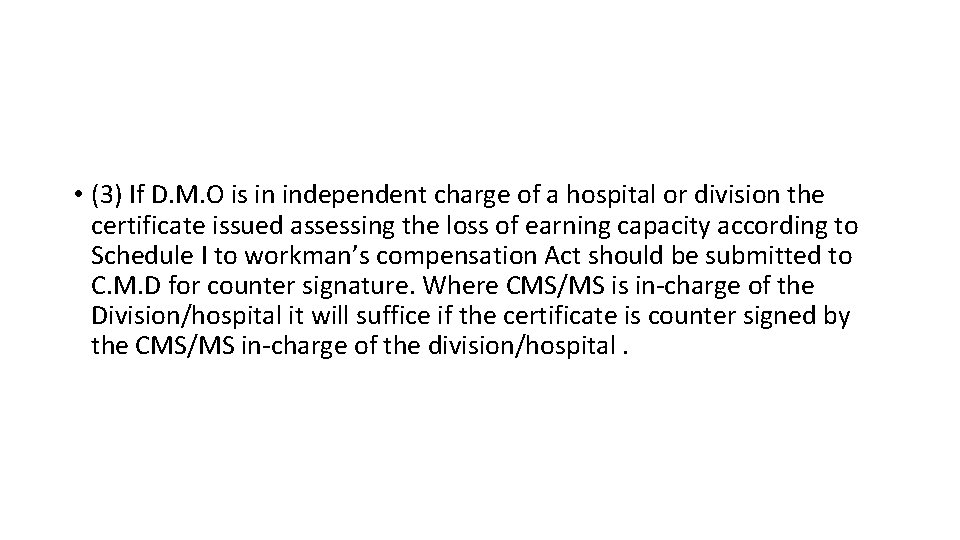
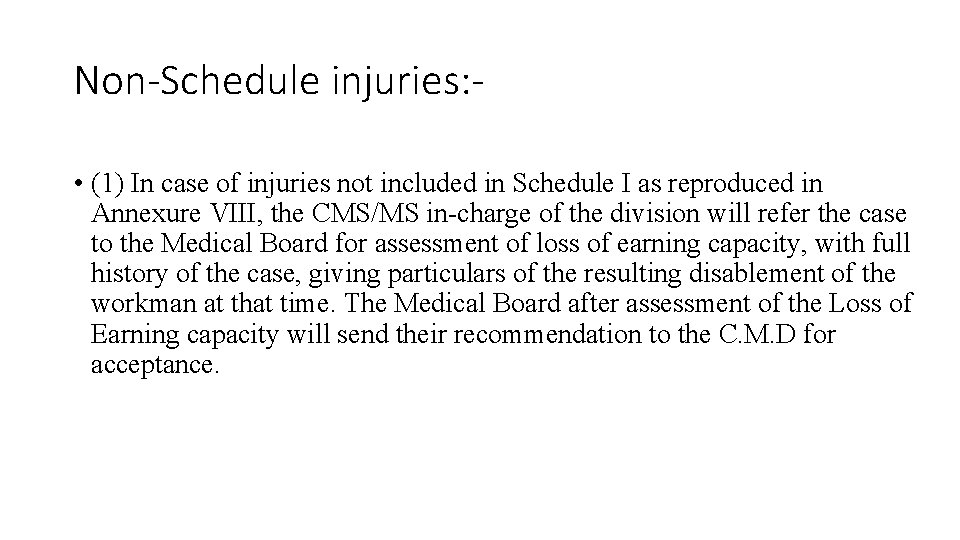
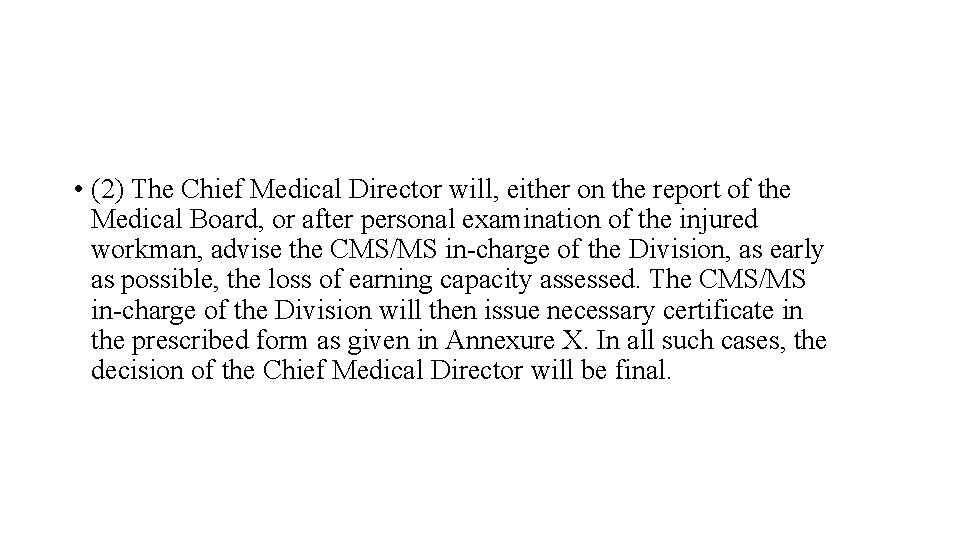
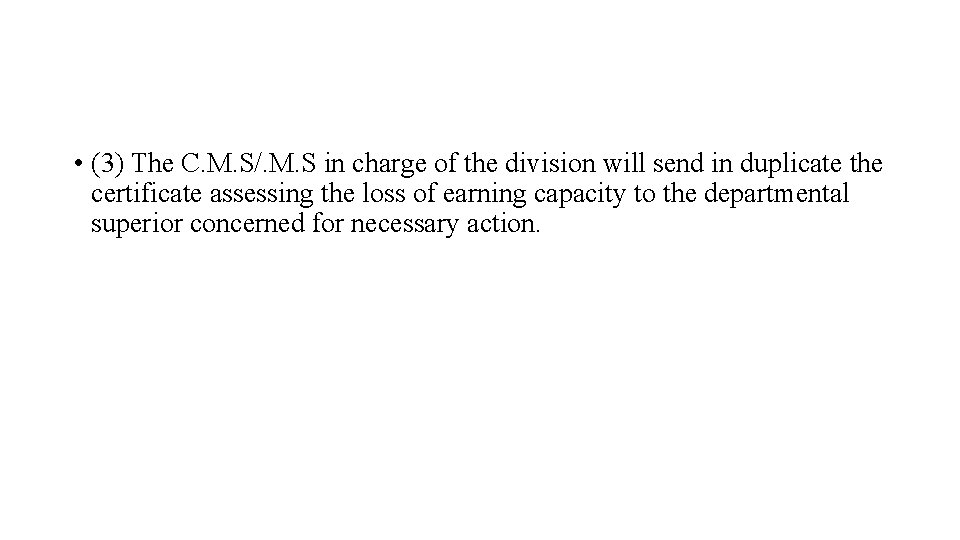
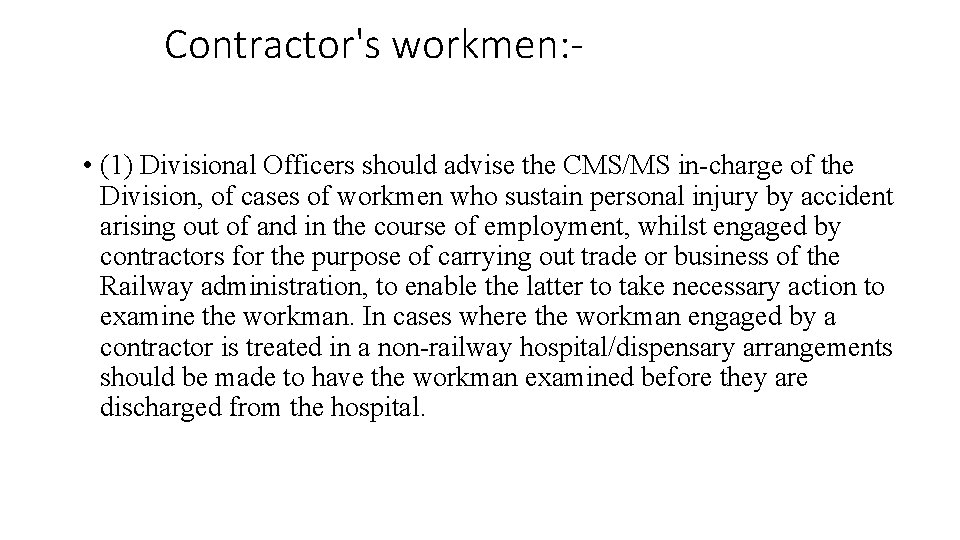
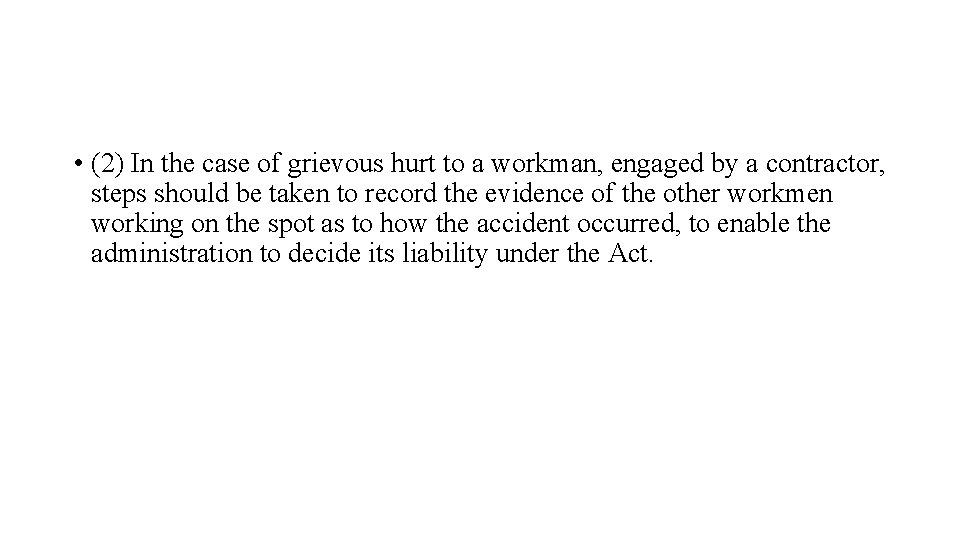
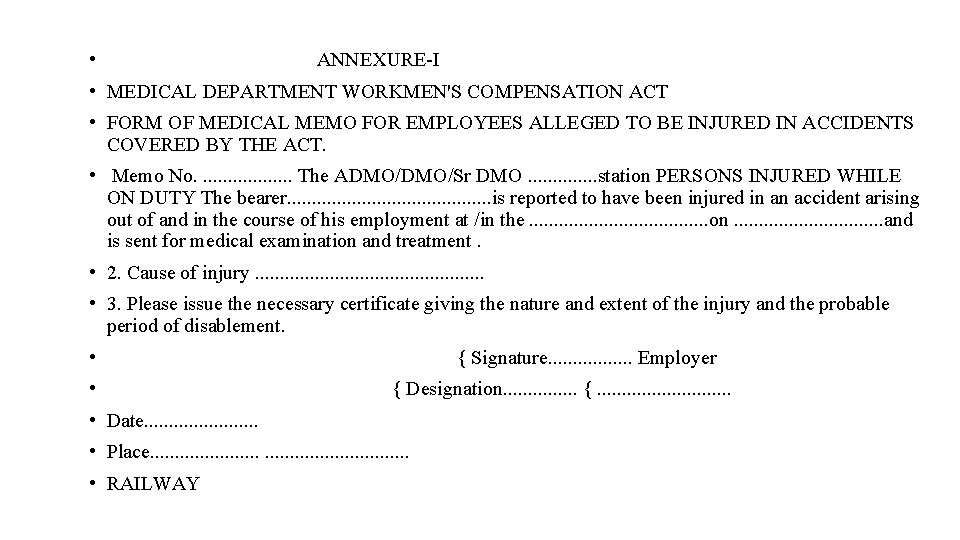
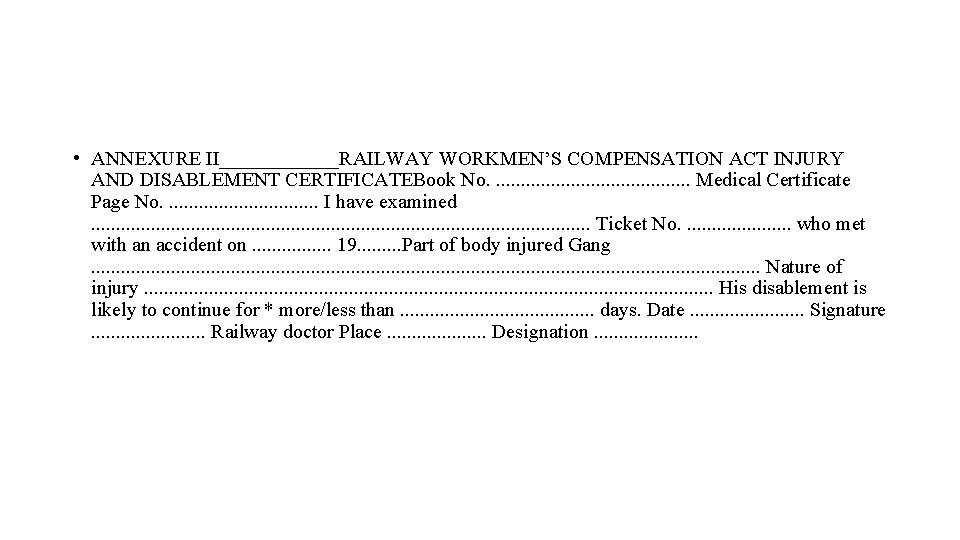
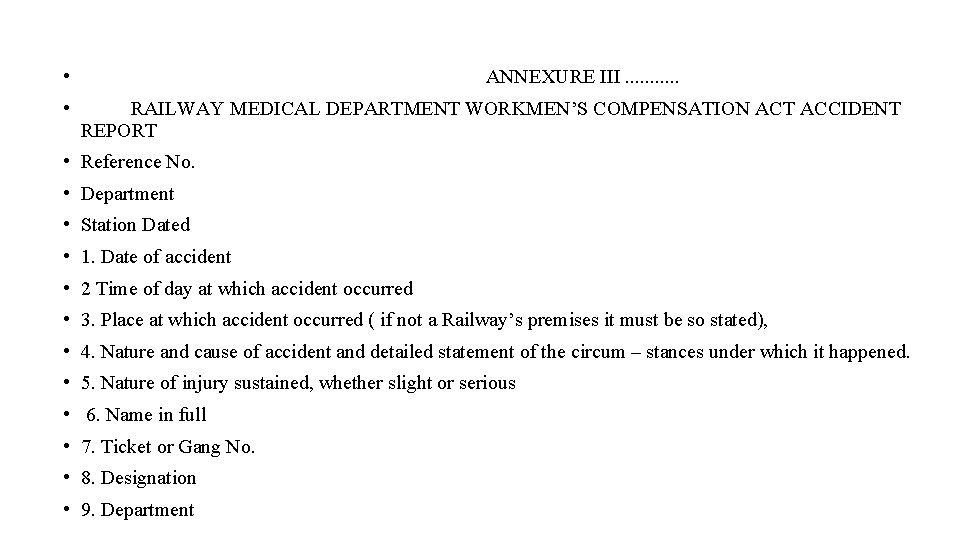
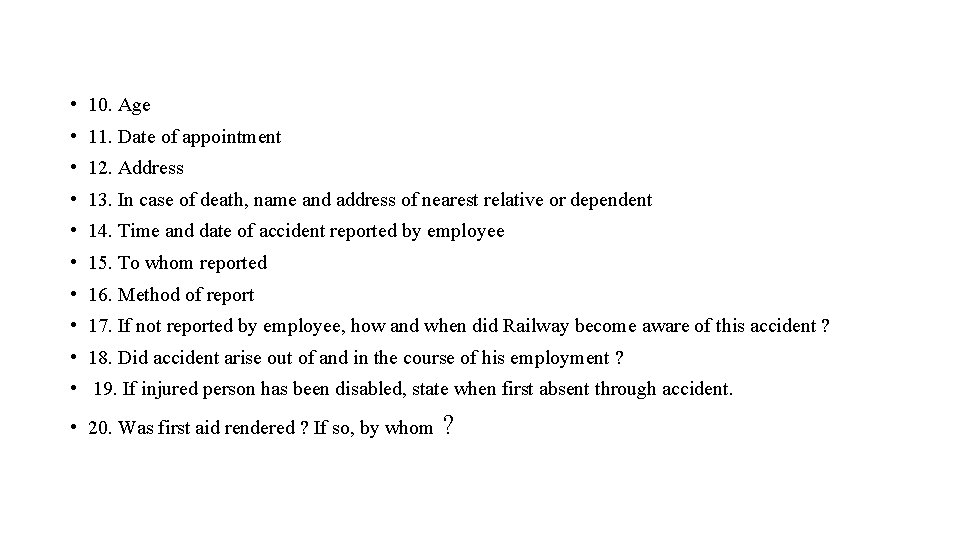
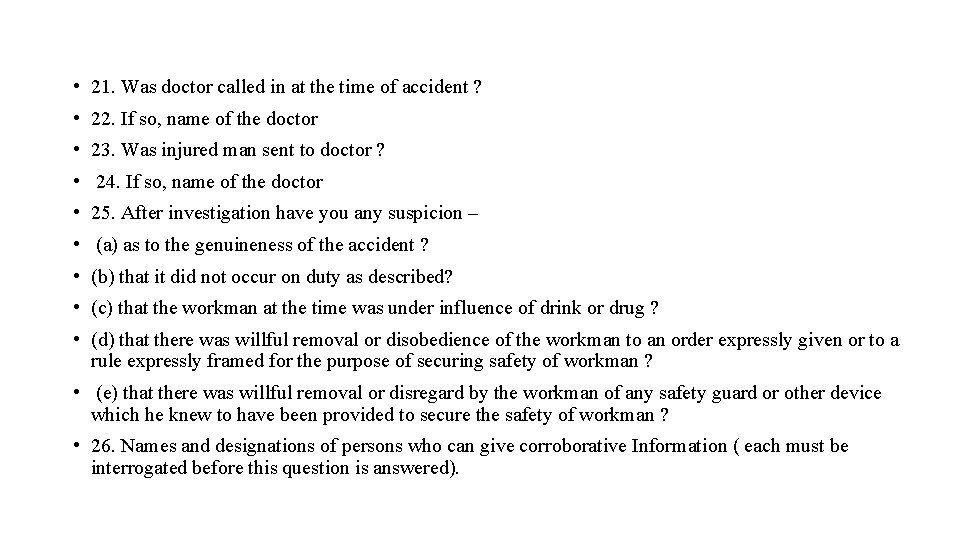
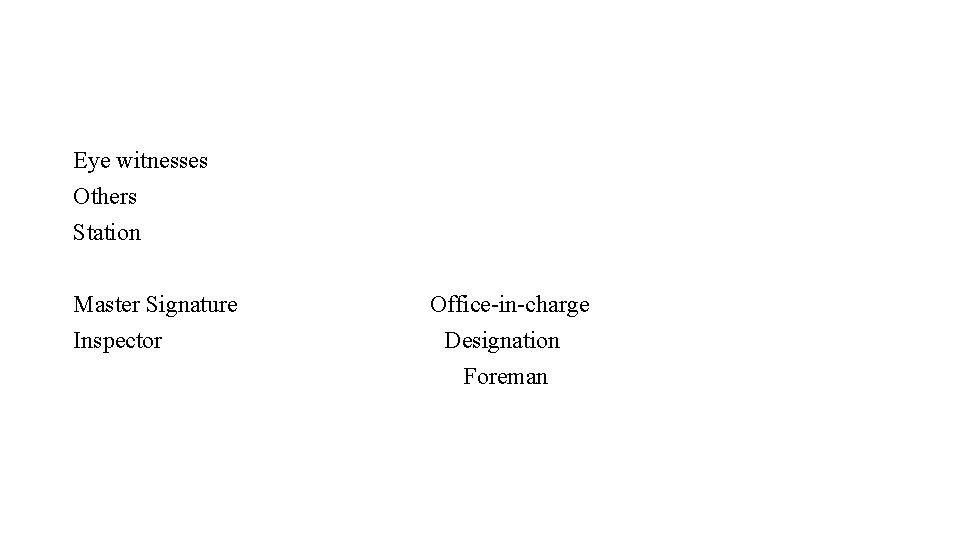

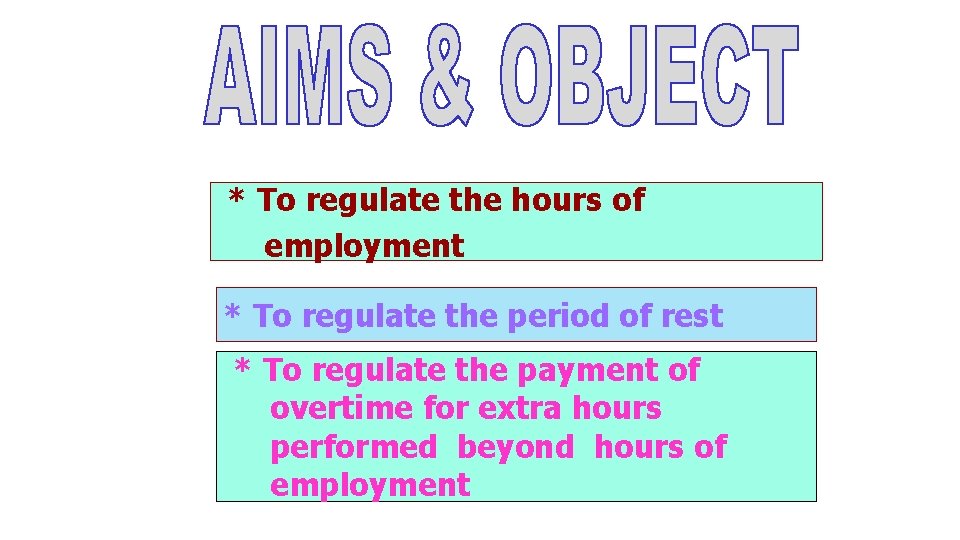
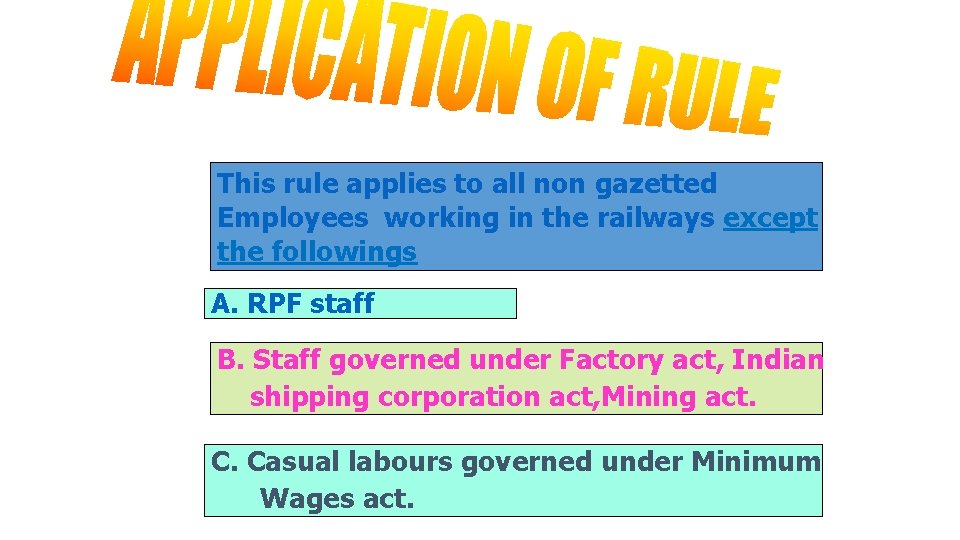
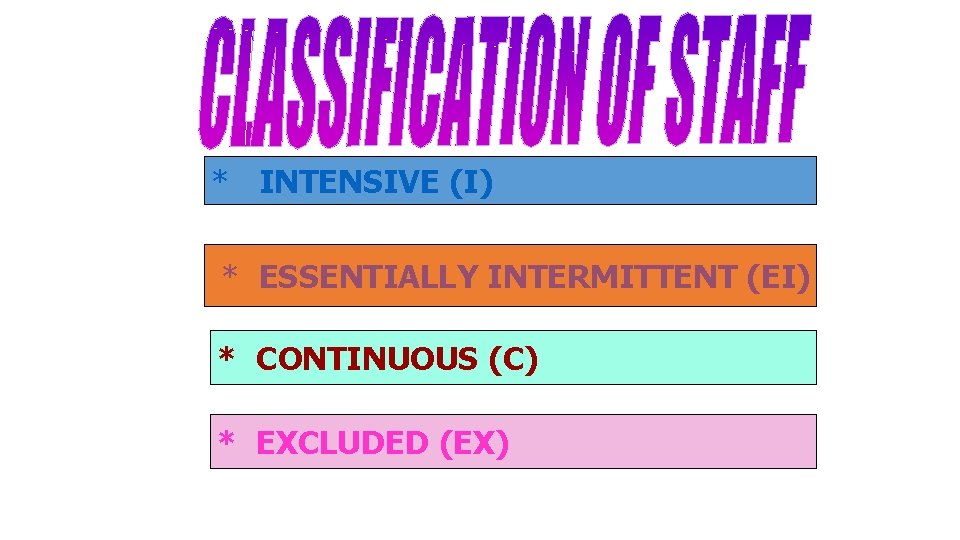
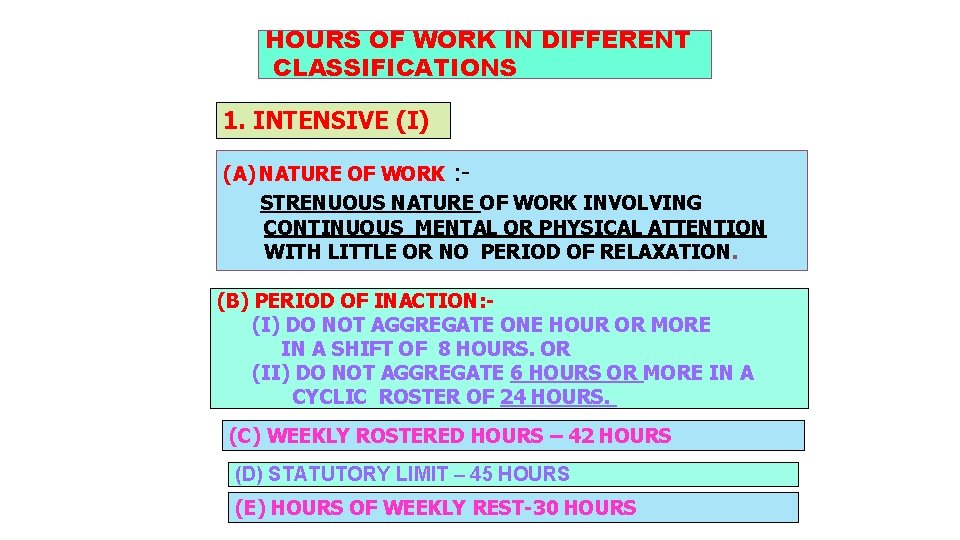
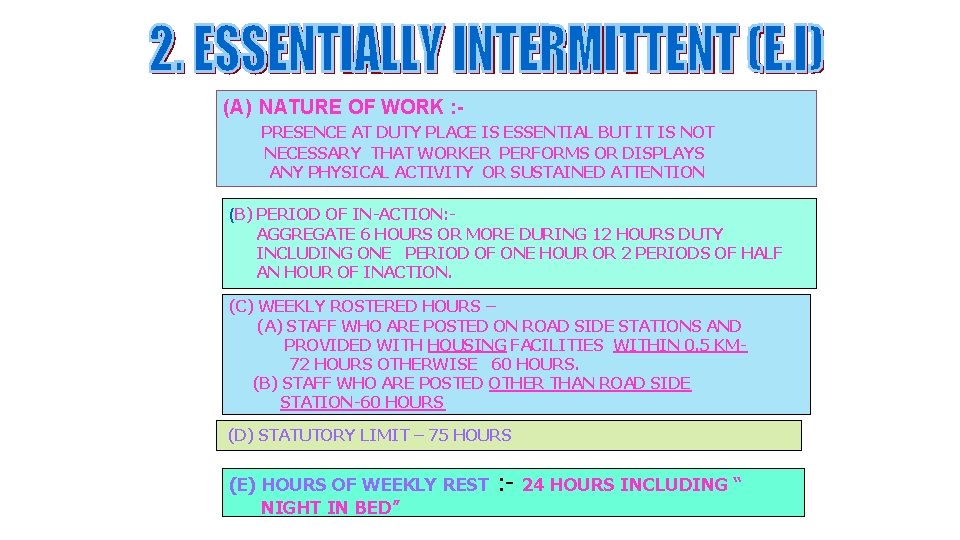
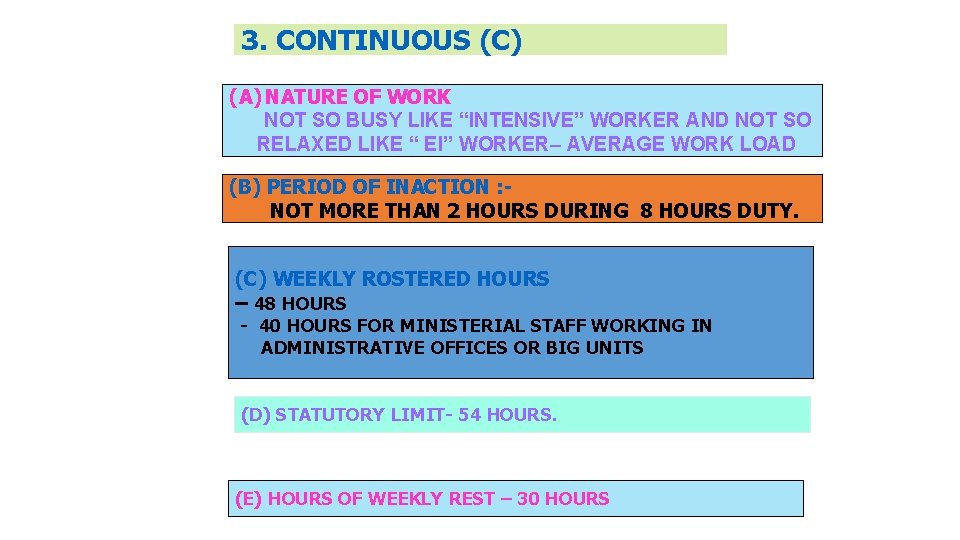

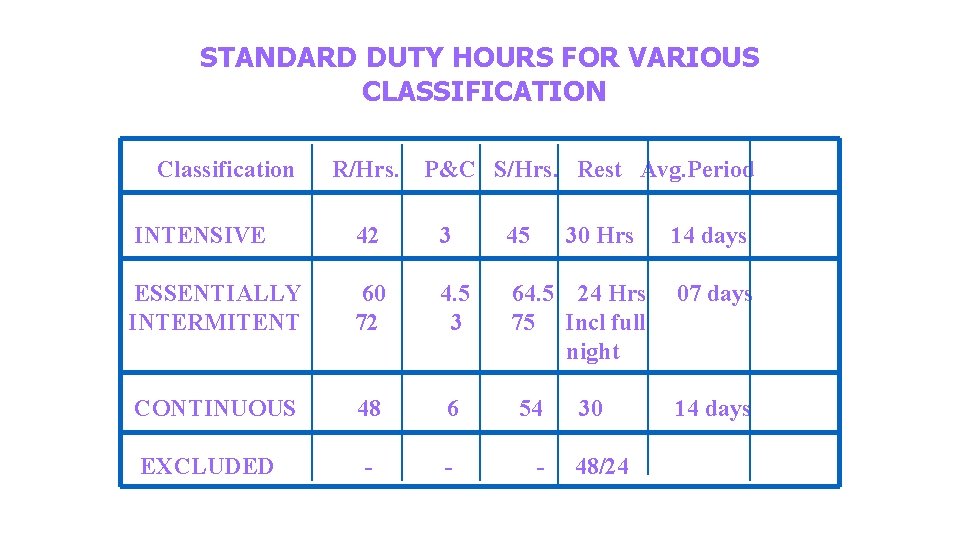
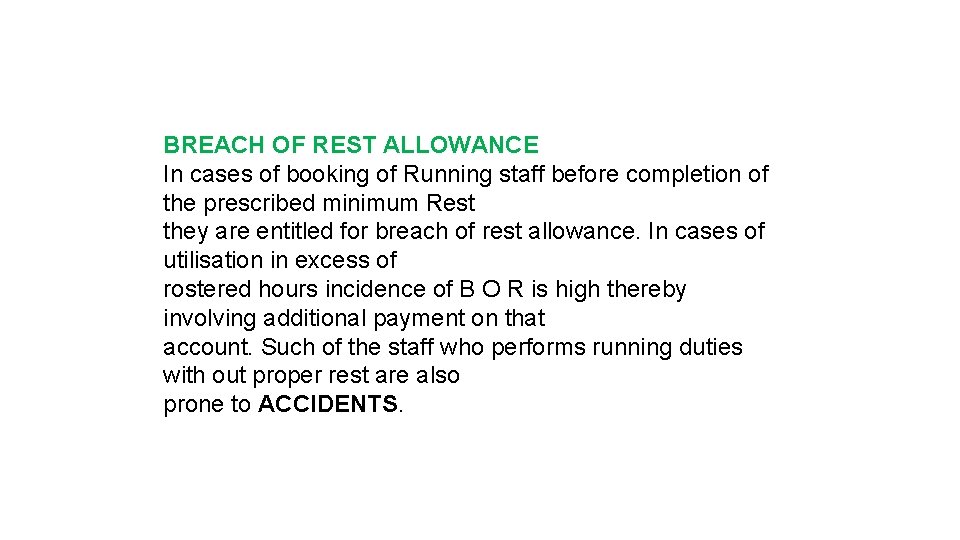
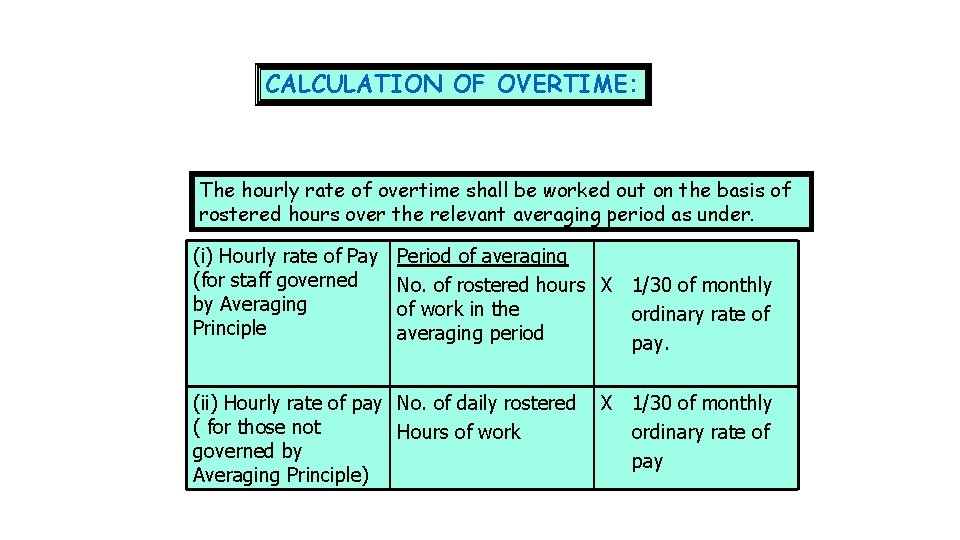
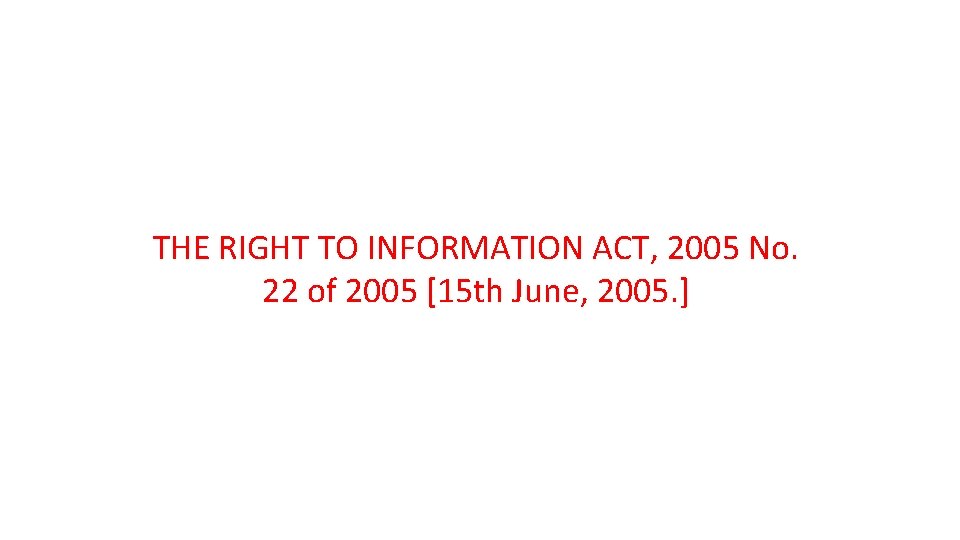
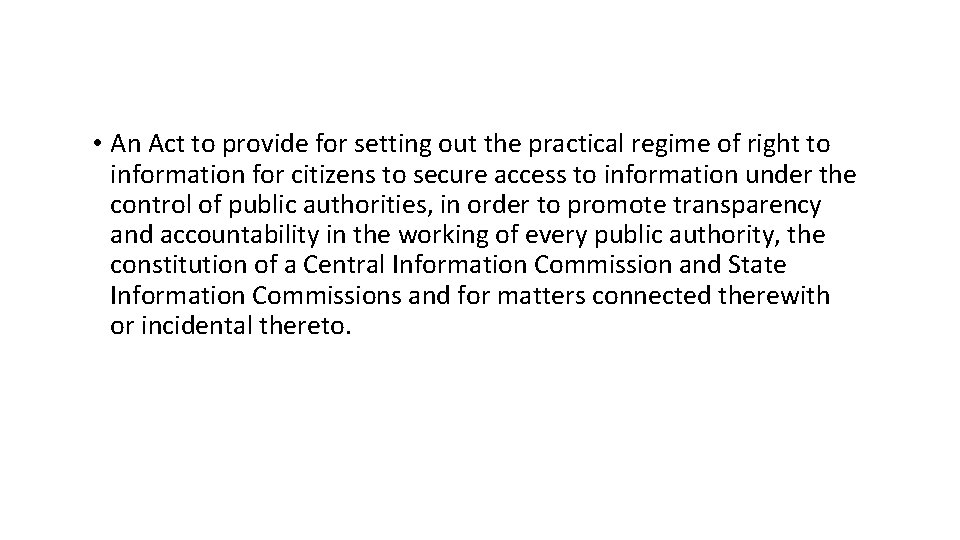
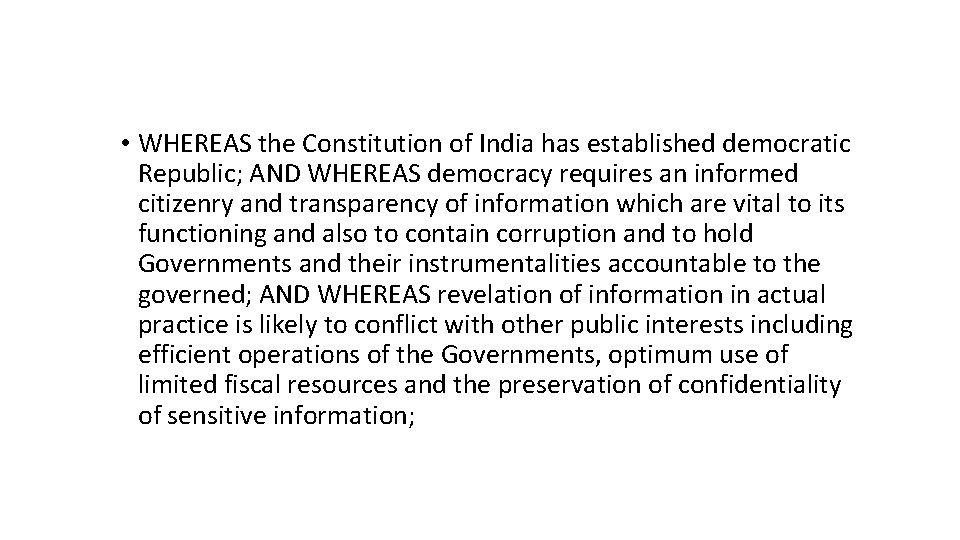
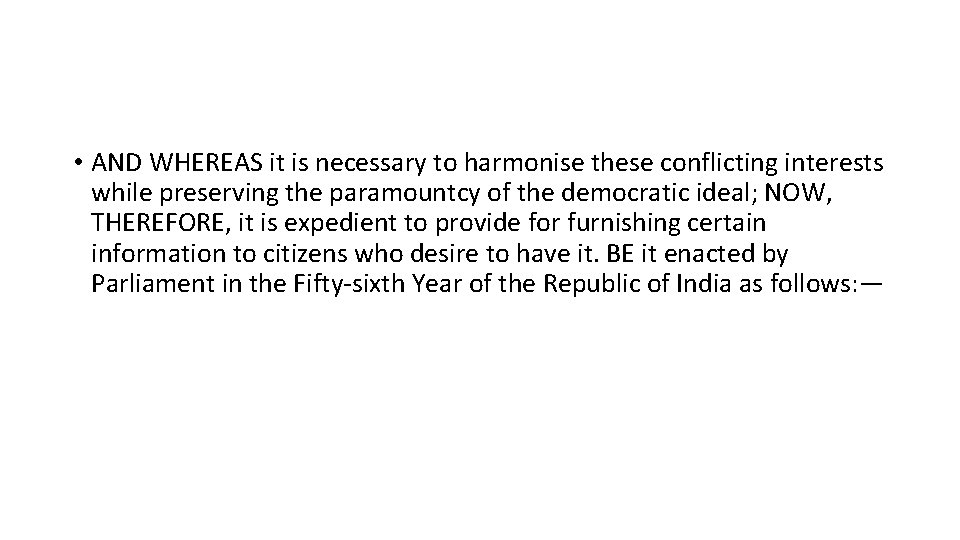
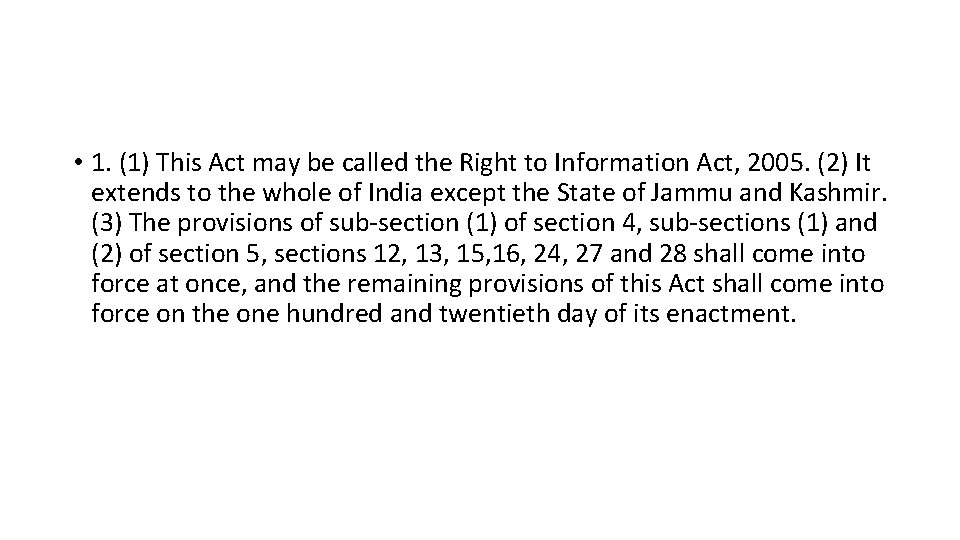
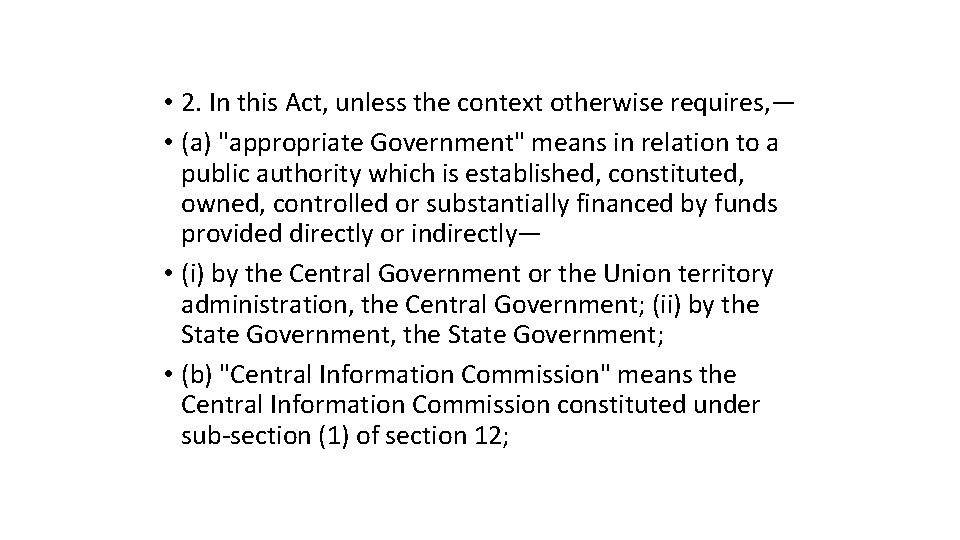

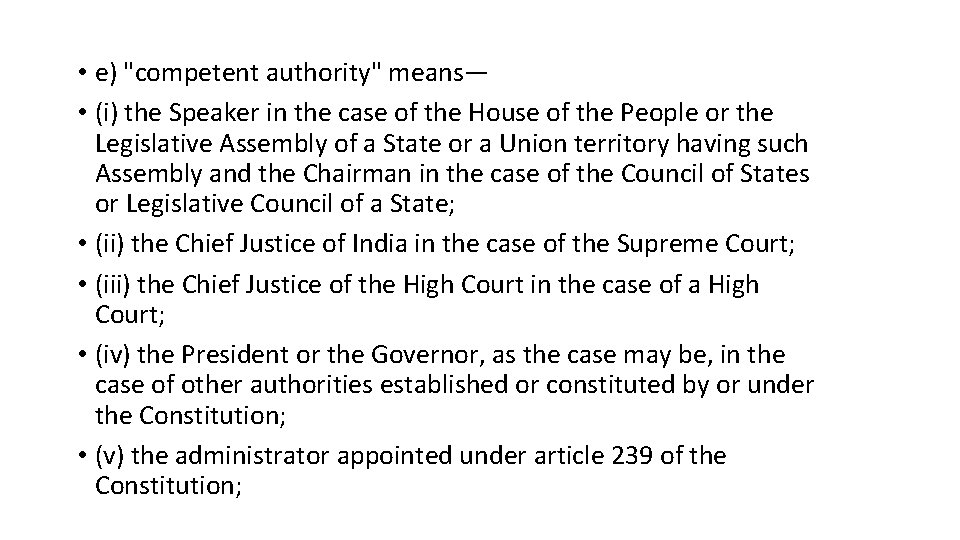
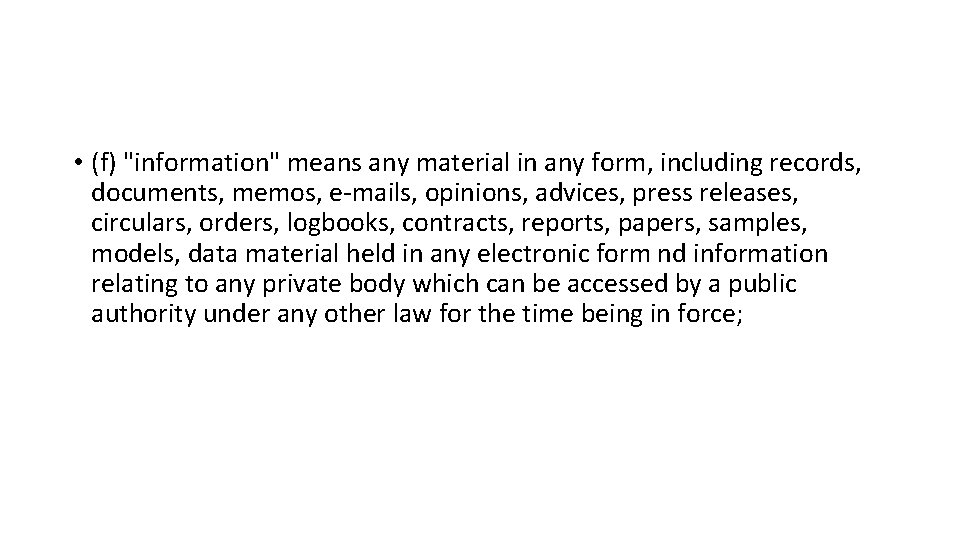
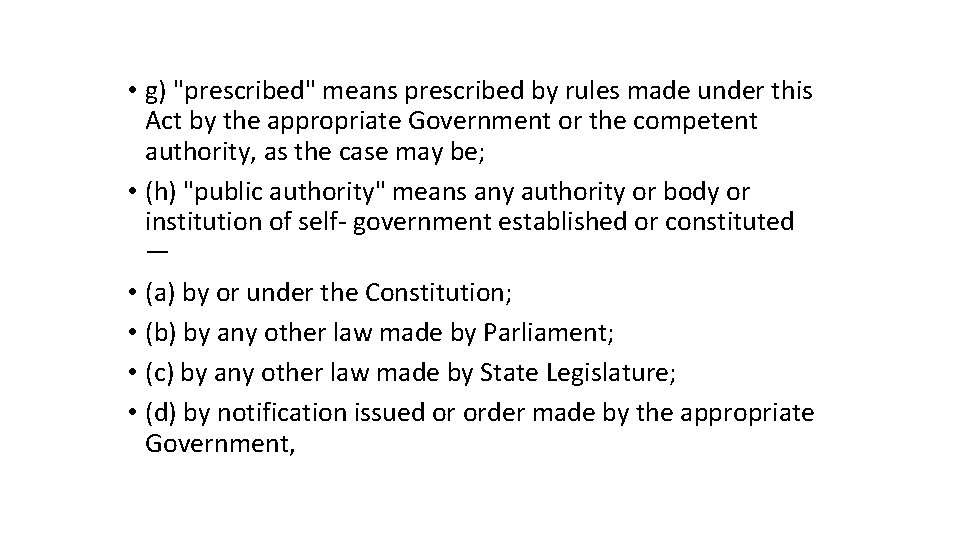
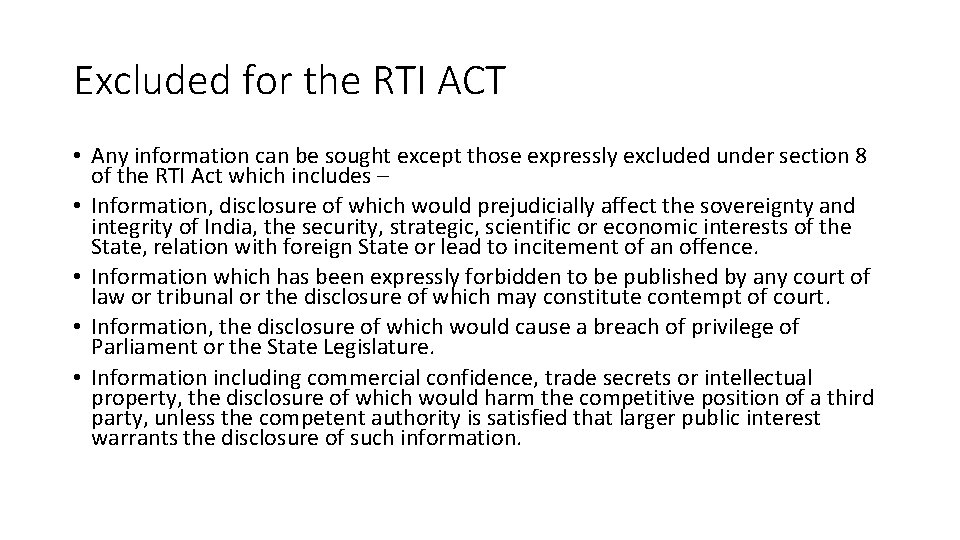
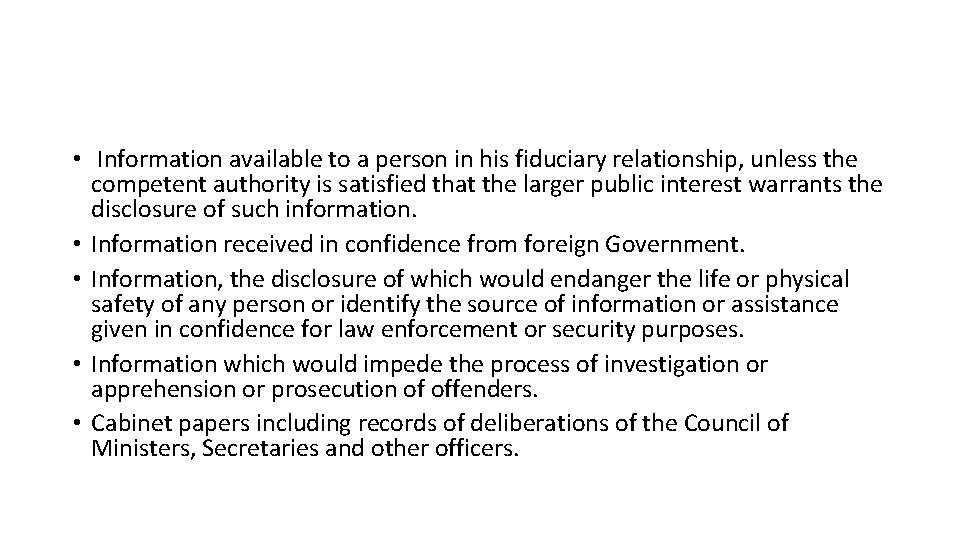
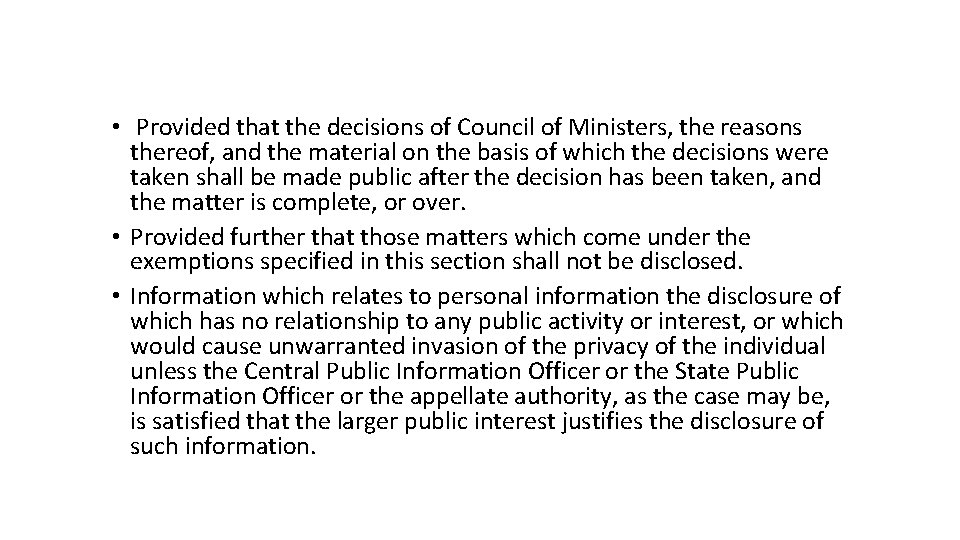
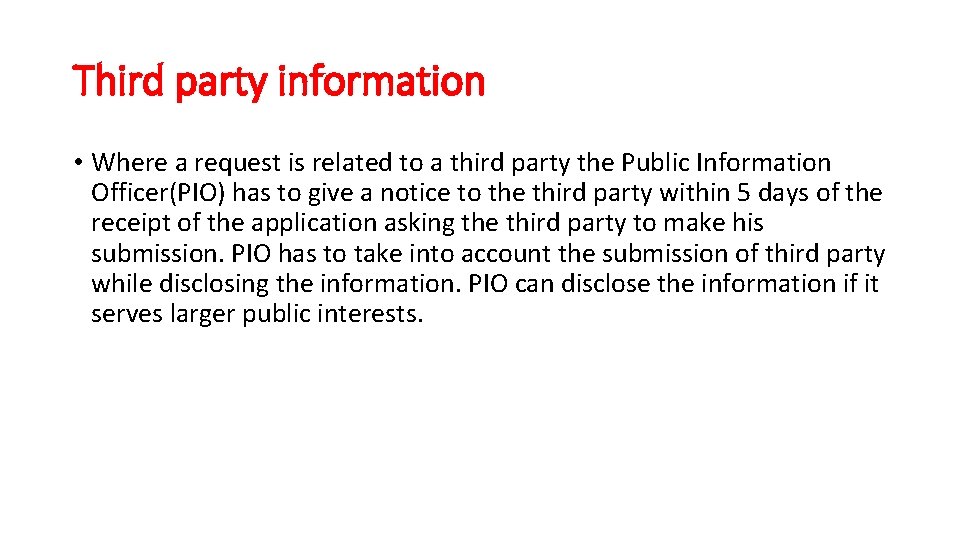
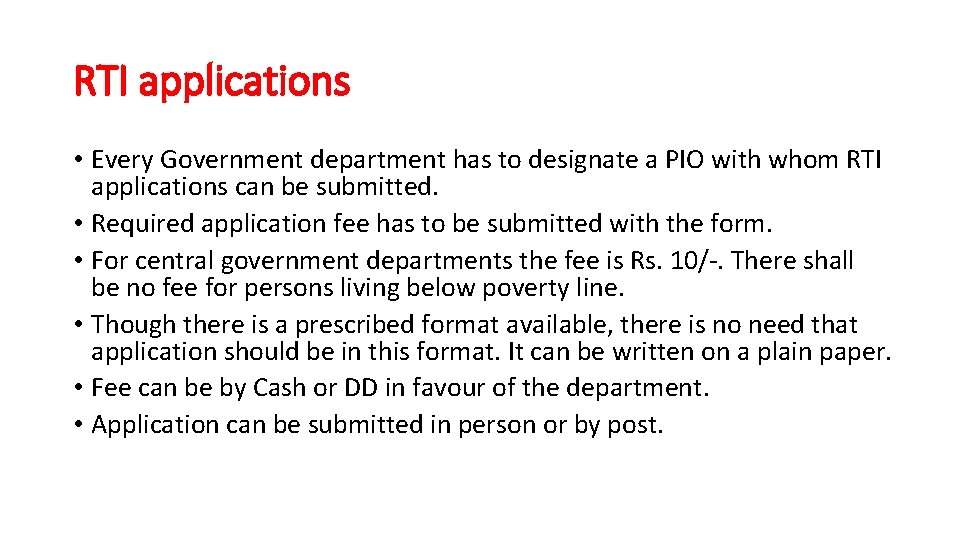
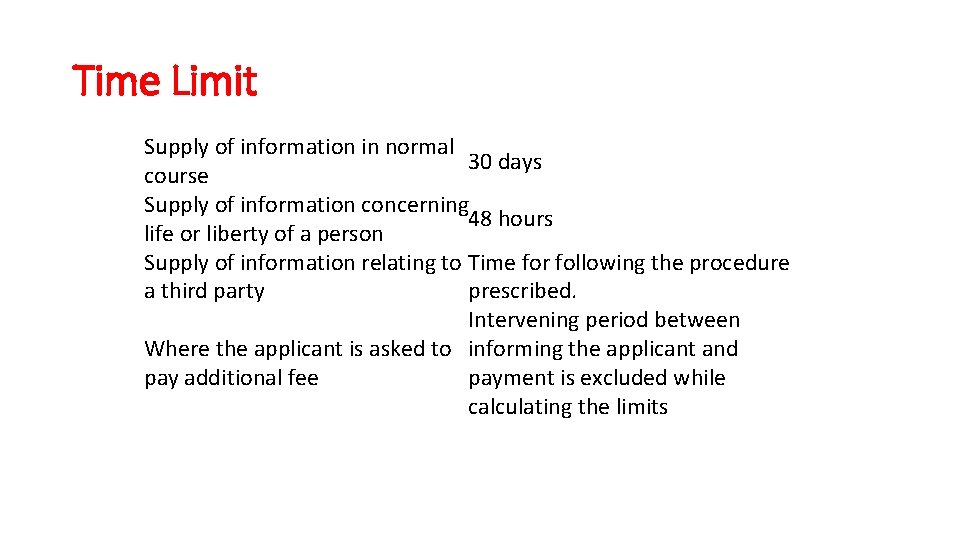
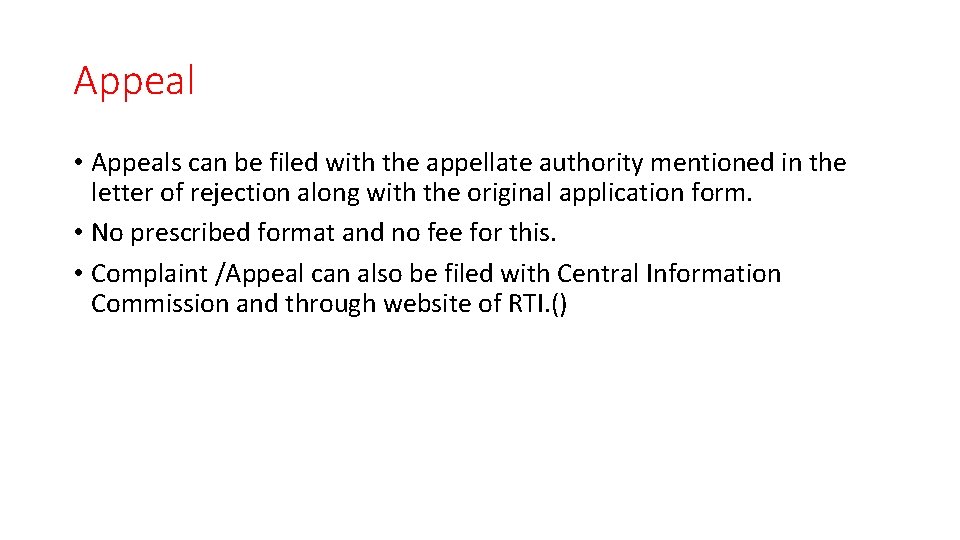
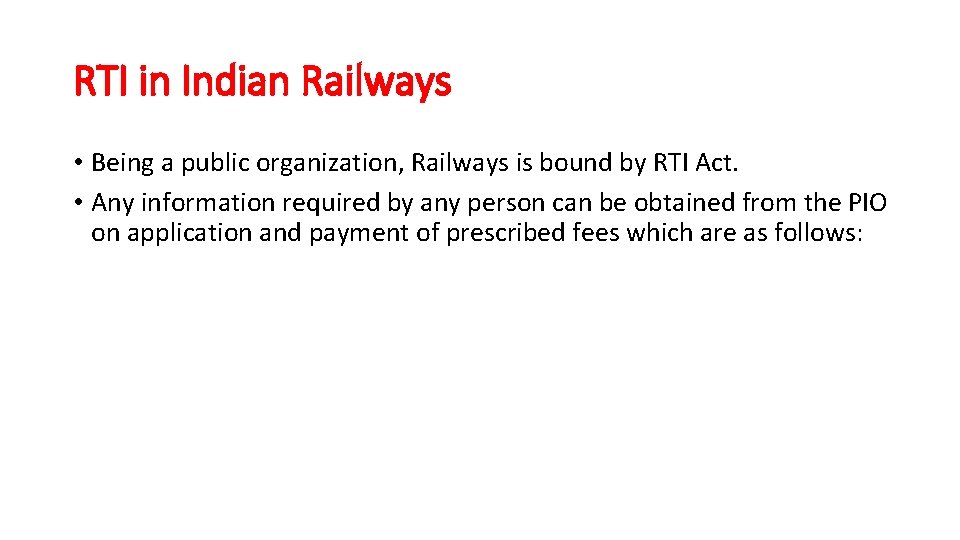
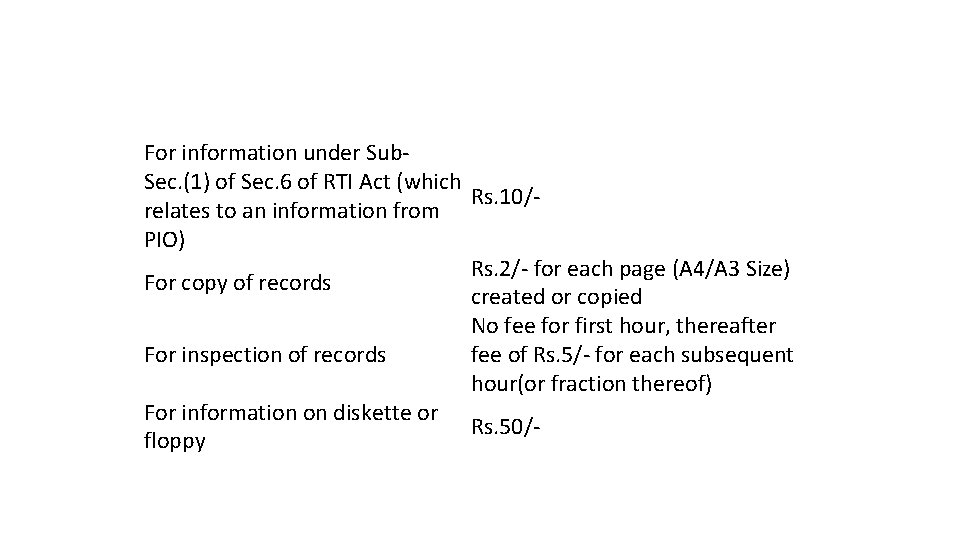
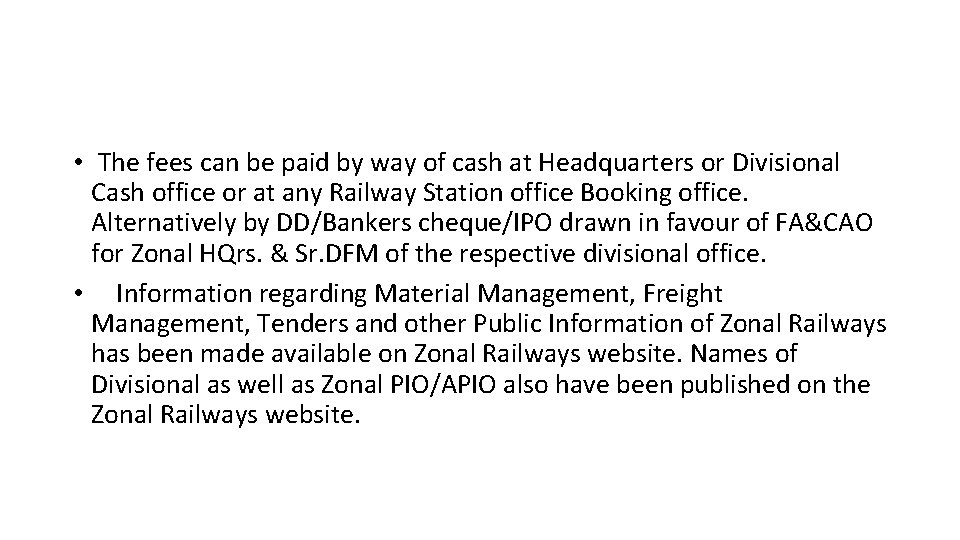
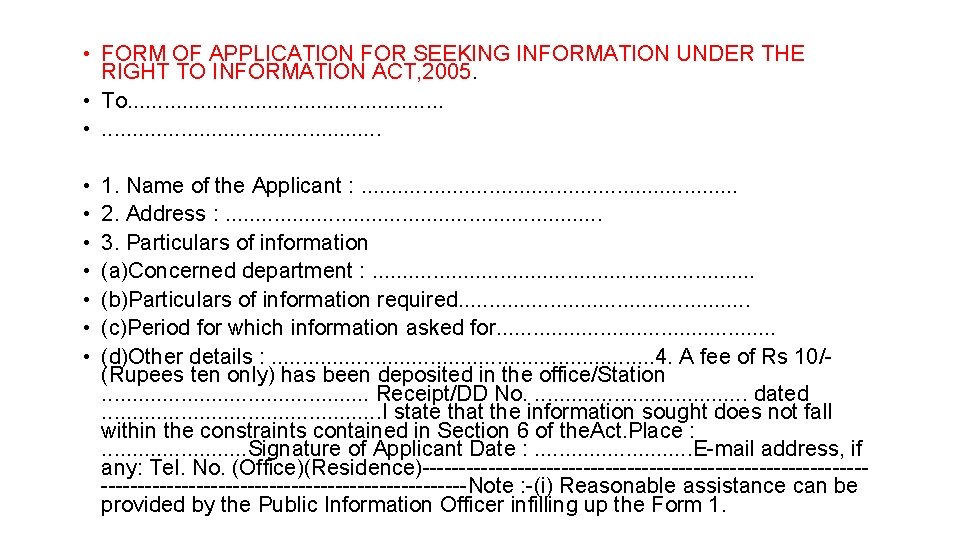

- Slides: 117

PERSONNEL 2. 4 Workmen’s Compensation Act, Action in case of injury/death on duty, Ex- Gratia Payment. Hours of employment regulation act, RTI ACT PERIOD-1


v Amendment • The Employees Compensation Act, 1923 extends to the whole of India. 1)Title: - • It came into force on the first day of July, 1924. It is social security legislation. Before Workmen‟s Compensation Act 1923 • The Employees Compensation Act, 1923 imposes statutory liability upon an employer to discharge his moral obligation towards employees when they suffer from any physical After - Title of the Act amended to “Employees Compensation Act 1923”. • disabilities or diseases, during the course of employment in hazardous working conditions. 1)Words and expressions: Before Refer to the • The aim of the Act is to provide quick and cheaper disposal of disputes relating to the compensation which is not possible in comparison in case of proceedings of civil law. The Act also helps the dependent's to get relieved from the hardship, rising from accident. • Employees Compensation Act, 19 relieved from the hardship, rising from accident.

Employees Compensation Act, 1923 - Factories Plantations Transport Establishments Construction Works Railways Ships Circuses

• Not applicable to: • Members of armed forces of union • Employees covered by ESI Act, 1948. (Dependents benefits available) • Casual Workers & workers employed otherwise than for employer‟s trade or business

Section 2 (1) (b) of the Act define, “Commissioner” as a • Commissioner for Workmen's Compensation appointed under section 20; Compensation [section 2 (1) (c)] means compensation as provided for by this Act; Employer [section 2 (1) (e)] includes: • i) any body of persons whether incorporated or not , ii) any managing agent of an employer , iii) legal representative of a deceased employer, iv) any workman whose services are temporarily lent or let on hire to another person, by the person with whom the workman has entered into a contract of service or apprenticeship; means such other person while the workman is working for him.

• (ii) “Total disablement” means such disablement, whether of a temporary or permanent nature, as incapacitates a workman for all work which he was capable of performing at the time of the accident resulting in such disablement. • Provided that permanent total disablement shall be deemed to result from every injury specified in Part I of Schedule I or from any combination of injuries specified in Part II thereof where the aggregate percentage of the loss of earning capacity, as specified in the said Part II against those injuries, amounts to one hundred per cent or more.

EMPLOYER’S LIABILITY FOR COMPENSATION • • • Ø OCCUPATIONAL DISEASES: 1) Part A of schedule III 2) Part B of schedule III 3) Part C of schedule III Ø PERSONAL INJURY: Personal injury Accident Arising out of employment & in course of employment Ø EMPLOYER IS NOT LIABLE WHEN: Disablement not exceeding 3 days Accident due to influence of drink, drugs or disobeyed orders, disregards of safe guards

Occupational Diseases - Hearing impairment caused by noise. - Lung Cancer caused by asbestos dust. - Diseases due to effect of heat/cold in extreme hot/cold climate, etc.

• The three tests for determining whether an accident arose out of employment are : 1)At the time of injury workman must have been engaged in the business of the employer and must not be doing something for his personal benefit;


EMPLOYER’S LIABILITY WHEN CONTRACTOR IS ENGAGED Section 12 of the act covers the employer‟s liability when contractor is engaged for the purpose of doing any work in respect of employer‟s trade or business. Such contractor has to execute the work with the help of workman engaged by him. But the employers will liable for the payment of compensation only in the following circumstances: • a. ) The contractor is engaged to do a work which is part of the trade or business of the employer. • b. ) The workmen were engaged in the course of or for the purpose of his trade or business. • c. ) The accident occurred in or about the premises on which the employer has under taken or undertakes to execute the work. • This provision, however does not prevent a workman fromrecovering compensation from the contractor instead of the employer. Here, the amount of compensation shall be calculated with reference to the wages of the workman under the employer by whom he is immediately employed.

Doctrine of Notional Extension • The expression in the course of his employment', connotes not only actual work but also any other engagement natural and necessary thereto, reasonably extended both as regards workhours and work-place. • It refers to the time during which the employment continues… • However, this is subject to theory of notional extension of the employer's premises so as to include an area which the workman passes and re-passes in going to and in leaving the actual place of work. There may be some reasonable extension in both time and place and a workman may be regarded as in the course of hisemployment even though he had not reached or had left his employer's premises. This is also called as the Doctrine of Notional Extension. •

Compensation for What? • Amendments • Sec. 4 (a): -The minimum ceiling limit of compensation for death was Rs. 80000/-Now it has been revised to Rs 1, 20, 000/ • Sec. 4(b): -The minimum ceiling limit of compensation for permanent total disablement was Rs. 90000/-Now it has been revised to Rs 1, 40, 000/ • sec. 4(2): -This sub-section was added after sub-section(2). This entitles an employee to reimbursement of actual medical expenditure incurred by him for injuries caused during the course of employment. • Explanation II to clauses(a)&(b) of Sec. 4: -Explanation –II prescribes the maximum wage limit at Rs. 4000/-p. m. for the purpose of computing compensation for death and permanent disablement. The. Explanation was omitted and a new sub-section (IB) has been added after Sub-section IA of sec. 4 whereby the maximum wage limit has been revised to Rs. 8000/-p. m.

• Sec-4 Provides for Compensation for: • -Death, • -Permanent Total, • -Permanent Partial , • -Temporary Partial, • -Temporary Total

Compensation to be paid • When due? • -as soon as it falls due i. e. liability for payment of compensation is fixed on employer • �If employer do not accept the compensation to the extent claimed: • -should make provisional payment to the extent he accepts • -payment should be deposited with commissioner for employee‟s compensation • -Employee having right to make any further claim. • �Time limit for payment: • -within 1 month from due date • -if not, commissioner direct the employer to pay the arrears with simple interest rate 12% or as prevailing in the bank. • -further delay: -50% of amount due will be recovered as penalty.

Amount of compensation • Section 4: • Where death of a workman results from the injury: • -An amount equal to 50% of the monthly wages of the deceased workman multiplied by the relevant factor or an amount of, Rs. 1, 20, 000 whichever is more. • Where permanent total disablement results from the injury: • -An amount equal to 60% of the monthly wages of the injured workman multiplied by the relevant factor or an amount of Rs. 1, 40, 000, whichever is more.

Amount of compensation • Where permanent partial disablement results from the injury (injury listed in part II of schedule I): • -% of loss of earning capacity that such % of compensation payable • �Where temporary total/ partial disablement of a workman results from the injury: • -An amount equal to 25% of the monthly wages payable every half-month

Procedure for calculation • Higher the age –Lower the compensation • -Relevant factor specified in second column of Schedule IV giving slabs depending upon the age of the concerned workman. • Example: In case of death: • -Wages Rs. 3000 PM • -Age 23 years • -Factor as schedule IV : 219. 95 * 1, 500 • -Amount of compensation Rs. 3, 29, 935. 00 • -In case of total disablement: Rs. 3, 95, 910. 00 • �Schedule II: List of persons engaged in different employment. • �Schedule III: List of occupational diseases. • �Schedule IV: Relevant factor.

Review of Half-Monthly payment • Half-Monthly payment may be reviewed by Commissioner on the application by Employer or employee. • �Application must be accompanied by certificate of qualified medical practitioner that there has been changed in the condition of employee. • �On review, Half-Monthly payment may be continued, increased, decreased, ended or converted into lump-sum.

Defence available to employers before E. C. Act, 1923. • Doctrine of assumed risk „volenti non fit injuria‟-where there is consent there is not injury. • Doctrine of common employment Employer notliable to pay compensation to employee for injury Workerworking with several persons for common purpose. Worker injured by some act or commission of some of the persons of his group. • Doctrine of contributory negligence Employees not entitledto compensation for injury caused by his own negligence. (employer not responsible for negligence on the part of employees. ) • Endof personal action with death Personal action (of employee) came to an end due to death of employee.

Penalty • Section 4 A: • -Where an employer is in default in paying the compensation due under this Act, within one month from the date it fell due, the Commissioner shall: • a)Direct that the employer in addition to the amount of arrears, pay simple interest there on at the rate of 12% per annum or on such higher rates. • b)Commissioner has the power under the Act to impose penalty and the interest on the cleared amount as per the provision of the act.

Distribution of compensation • Section 8: - • The compensation payable for death and • The compensation payable to a woman or person of legal disability shall be through the commissioner only. • Employer can make advance payment directly to dependents in case of death equivalent to three months salary of the deceased person. • Employer is exonerated from his liability if he deposits the compensation amount with the commissioner within the stipulated time. • The commissioner shall call dependents of the deceased and determine the method for distribution of compensation among them. • If no dependents are found then amount shall be refunded to the employer. • On request by the employer the commissioner shall furnish the details of disbursement.

Contracting Out of the compensation • Section 17 • Any contract or agreement whereby a workman relinquishes any right of compensation from the employer for personal injury arising out of or in the course of the employment, shall be null and void in so far as it purports to remove or reduce the liability of any person to pay compensation under this Act.

Ways open to employees for claiming compensastion: • Injured employee may: • file a civil suit; or • claim compensation under E. C. Act, 1923 • Employee can not file a suit for damages in any court of law if he filed claim under E. C. Act‟ 1923.

Comparison • Civil Suit E. C. Act, 1923 • • Risky & Costly Safe & less Costly • Employer can put forward all defenses available to him under laws of torts.

NOTICE AND CLAIM • Section 10 • To claim the compensation: • The claimant shall give notice of accident to the employer or by entering in the notice book within the reasonable period. • Every such notice shall give the name and address of the person injured, the cause of the injury and the date on which the accident happened and • Submit the claim application to the commissioner within two years from the date of accident. • In case of occupational disease the accident is deemed to have occurred on the first day of disease. • Defect if any in the notice or not giving notice or delayed application will not bar the claim for compensation.

Procedure in the proceedings before the commissioner • Section 19 -Reference to commissioners. • Section 20 -Appointment of commissioner. Section 20 • Section 21 -Venue of proceedings and transfer. • Section 22 -Form of application. • Section 22 A –Power of the Commissioner to require further deposit in case of fatal accident. • Section 23 –Powers and procedure of Commissioners. • Section 24 –Appearance of Parties. • Section 25 -Methods of recording evidence. • Section 26 –Costs. • Section 27 –Power to submit cases. • Section 28 –Registration of Agreements. • Section 29 –Effect of failure to register agreement.

Appointment of commissioner • Section 20 • The State Government may, by notification in the Official Gazette, appoint any person to be a Commissioner for Workmen's Compensation for such area as may be specified in the notification. • Any Commissioner may, for the purpose of deciding any matter referred to him for decision under this Act, choose one or more persons possessing special knowledge of any matter relevant to the matter under inquiry to assist him in holding the inquiry.

Reference to commissioners • Section 19 • 19(1): -If any question arises in any proceedings under this Act as to the liability of any person to pay compensation (including any question as to whether a person injured is or is not a workman) or as to the amount or duration of compensation (including any question as to the nature or extent of disablement), the question shall, in default of agreement, be settled by a Commissioner. • 19(2): -No Civil Court shall have jurisdiction to settle, decide or deal with any question which is by or under this Act required to be settled, decided or dealt with by a Commissioner or to enforce any liability incurred under this Act.

Case laws • State of Kerala v. khadeeja beevi, 1988 • -A govt. servant who is employed as “Mahout” in the forest deptt. is also treated as employee under this act even if he is covered by family pension, GPF, & family benefits scheme under the govt. • N. A. CHAUHAN v. N. K. SHAH, 1991 • -Expression “arising out and in course of employment”. The words suggest that there should be casual relationship between the employer and accident. • New India assurance co. ltd. v. Mohan Kumar sahu, 2004 • -Person engaged for one day to drive vehicle of the owner is also the employee in this act. The Owner have definite control over the person. The person was driving the vehicle on the direction of the owner of the vehicle. His engagement for one day only will not throw him out of the definition of Employees u/s 2(n) of the act.

Case laws • G. S. R. T. C. v/s Ashok Kumar keshavlal Parekh, 1999 • Sec. 16 of Apprentices Act, 1961 entitles a apprentice to claim compensation under this act if Personal Injury caused to him by accident arising out of or in course of his training as an apprentice. • Radhamony v/s Secretary, Department Of Home Affairs, 1995 • A Person employed as driver comes under the category of employees irrespective of the position whether he is a non-govt. employee or govt. employee. • Devidayal Ralyaram v/s Secretary of state of AIR, 1937 • According to Doctrine Of Added Peril if a workman while performing his duty does something which is not required to do and which involves extra danger, the employer would not be liable to pay compensation if any injury caused to him.

Cases of Accidents Arising Out of & In the Course of Employment • Railway employee was ordered to travel to a certain station to repair a water main. When he had finished the work & was crossing the platform to catch the train, he slipped & died as a result. • A watchman in the course of his duty lifted G. I. Pipe in order to keep it in a safe place. While doing so, he received injury. • An employee suffered from heart disease & died on account of strain of work by keeping continuously standing or walking. • An employee suffering from heart disease after having worked for 8 hours on a hot day in a mill collapsed. There was evidence to the effect that collapse was likely to have been caused by strain of work on a diseased heart.

• Workmen's Compensation Act and Medical Examination and Certification under the Workmen's Compensation Act

• Definition and Application: - (1) “The Workmen's Compensation Act is an act to provide for the payment by certain classes of employers to their workmen of compensation for injury by accident” (2) “Work man” means any person (other than a person whose employment is of a casual nature and who is employed otherwise than for the purpose of the employer’s trade or business) who is -

• i) a Railway servant as defined in clause 34 of section 2 of the Railways Act, 1989 (24 0 f 1989)] not permanently employed in any administrative, district or sub-divisional office of a Railway and not employed in any such capacity as is specified in Schedule II or ii) employed in any such capacity as is specified in Schedule II ,

“Partial disablement “ means, • where the disablement is of a temporary nature, such disablement as reduces the earning capacity of a workman in any employment in which he was engaged at the time of the accident resulting in the disablement and, where the disablement is of a permanent nature, such disablement as reduces his earning capacity in every employment which he was capable of undertaking at that time: provided that every injury specified in Part II of schedule I shall be deemed to result in permanent partial disablement;

“ Total disablement” means • such disablement whether of a temporary or permanent nature, as incapacitates a workman for all work which he was capable of performing at the time of the accident resulting in such disablement: provided that permanent total disablement shall be deemed to result from every injury specified in part I of schedule I or from any combination of injures specified in Part II thereof where the aggregate percentage of the loss of earning capacity as specified in the said Part II against those injuries amounts to 100%. or more;

Compensation: • If personal injury is caused to a workman by accident arising out of and in the course of his employment, his employer shall be liable to pay compensation in accordance with the provision of this act provided that the employer shall not be so liable.

• a) in respect of any injury which does not result in total or partial disablement of the workman for a period exceeding three days. b) in respect of any injury not resulting in death or permanent total disablement caused by an accident which is directly attributable to:

• i)The workman having seen at the time there of under the influence of drink or drugs. ii)The willful disobedience of the workman to an order expressively given or to a rule expressively framed, for the purpose of securing the safety of workman or iii)The willful removal or disregard by the workman of any safety guard or other device he knew to have been provided for the purpose of securing the safety of workman.

• Unless otherwise specified, the term "Railway Medical Officer" will mean the following : • (i) Assistant Divisional Medical Officer. • (ii) Divl. Medical Officer. • (iii) Sr. Divl. . Medical Officer

All injury cases to be examined carefully: • It is essential that all Railway doctors should be conversant with the Workmen's Compensation Act as they are likely to be called upon in the discharge of their duties to examine, certify and assess the loss of earning capacity and the consequent compensation to be paid therefor to Railway employees injured on duty and governed by the said Act.

• (2) Besides this, a Railway doctor may have to appear before a Commissioner appointed under the Act to give evidence in cases of dispute between the administration and the employee. It is, therefore, necessary that every case of injury coming under the Workmen's Compensation Act should be viewed as a potential case likely to be brought before a Commissioner and every care should be taken to note down all particulars of such cases.

Medical Examination of injured workmen: • If a workman sustains injury while on duty, his immediate superior will either arrange for the injured workman to be examined by the nearest Railway Medical Officer at the site of the accident, or will arrange for the injured workman to proceed, or to be conveyed, to the authorised medical officer with a memo on the prescribed form as given in Annexure I to this Chapter. The Railway medical officer, after examination of the injured workman, will issue, if the workman is not fit to return to work immediately,

• a sick certificate in the prescribed form (Sick certificate) as given in Annexure XI to chapter V with a rubber stamp bearing the words: "This injury is consistent with the statement that it was caused by accident", as well as a certificate in the prescribed form as given in Annexure II to this Chapter giving particulars of the part of the body injured, the nature of the injury - whether simple or grievous - and the probable period of disablement, and forward the same to the immediate superior of the injured workman.

Injury Report Register: • (1) An entry of all cases of injuries with which a Railway doctor has to deal must be made in an accident register which is to be maintained in every hospital and health unit. This entry is in addition to the entries made in any other register, such as on daily attendance register or on case papers.

• (2) The entry in the accident register must be made as soon as possible after the patient is seen for this first time and thus becomes an extremely valuable record of the first clinical examination. Sufficient space should be left below the entry so that additional information obtained later on such as X-ray reports, admission to hospital, or subsequent death of the patient during the period of treatment for the injuries can be entered neatly and without encroachment on the next entry.

• (3) Records of injuries to employees " on or off duty ", family members of employees and members of the general public must be kept each in a separate section of the register. There should be diagrammatic figures on the reverse of the injury report, on which the details of injuries are to be shown.

• (4) The Railway medical Officer at the time of examination will note carefully the list of injuries on the prescription slips which should not be destroyed as they may be required at any future date for assessing the extent of disablement for purposes of payment of compensation claimed by the injured workman. Prescription slips should also be treated as confidential documents.

Disposal of claim for an injury when no sign of injury is found: • If a patient claims that he is injured and clinical examination shows no sign of injury, these facts must be recorded in the accident register, but all such cases are to be referred to the CMS/MS in-charge of the division.

Caution where no sign of injury is seen. • Attending Medical Officer must make a clear distinction between the complaints of the patient and the physical signs of injuries observed. Doubtful cases should be referred to the CMS/MS in-charge of the Division, postponing a diagnosis and issue of certificate until his advice has been received. Pre-existing disease and deformities must be noted.

Case Sheets: • (1) Case sheets should be made out for all cases of injuries and are to be used for making day-to-day notes on the progress of the cases, instructions from the CMS/MS in-charge of the Division, results of Xray examination, and so on.

• (2) These case papers are not to be handed over to a patient to be taken home, where it may be lost, mutilated or soiled, as it is a very valuable record of the case subsequent to the first entry in the accident register. It must be retained as an official record.

• (3) CMS/MS s in-charge of the division will make their own local arrangements regarding the safe transmission of these injury case papers from their hospitals to subordinate hospitals and health units. In addition to the records outlined above entries of attendance of the injured person will be made also in the daily attendance register just as for any other patient, and the injury case paper will bear the serial number as recorded in the daily attendance register.

Certification and attendance of injured employees: • (1) All injured employees are to be regarded from the beginning of attendance as persons making a claim or likely to make a claim that the injury was sustained on duty and, therefore, the Railway doctor must not assume that because the accident report in the prescribed form as given in Annexure III has not yet been received, the case is not one coming under the Workmen's Compensation Act, for often the accident report is received by the Railway doctor some time after the accident.

• (2) When an employee attends a Railway hospital or health unit for an injury or alleged injury, he will be issued a sick certificate only if he is unable to perform his duties. If the attending Medical Officer is on doubt regarding the employee's fitness for work or whether the physical signs shown are due to an injury, the case shall be referred at once to the CMS/MS in-charge of the Division, certification being postponed until his advice is received.

• (3) The CMS/MS s in-charge of the Division can make their own local arrangements regarding cases being sent up to them, but it is considered essential that at least all cases of injuries to the eye or of suspected fractures shall be sent to them for examination at once, if the patient is in a position to be transported safely, along with the injury case paper, otherwise, the. CMS/MS in-charge of the Division may be called by theattending Medical Officer to the station where the injured person is lying. In the case of an eye injury, both the eyes must be examined and detailed notes made of their condition, and visual acuity figures recorded.

• 4) In all cases of injury to the eye or near about the eye, vision is each eye at the time of admission and at the time of discharge should be recorded. • (5) If an employee is unfit to work and shows definite signs of injury, a sick certificate is to be issued immediately and if a definite diagnosis cannot be made, the best provisional diagnosis under the circumstances can be entered in the certificate.

• (6) One of the functions of a Railway doctor is to fit work to man and man to work. To do this, close and repeated observation of the conditions and circumstances of work will need to be combined with constant study of men at work. • (7) The Railway doctor should, therefore, see that the workmen are in a good state of health and there is no gross defect in their visual acuity or in the body, which is likely to endanger them or their co-workers' safety.

• 8) Visual acuity of all employees, met with an accident on duty, should be recorded both on the injury case sheet and the accident register.

• (9) Further, when an employee has suffered from an eye injury, before he is discharged to duty, his visual acuity should be examined by the CMS/MS in-charge of the Division, and if his vision is below the standard required for his class of employment then he should be dealt with in accordance with the regulations for the medical examination of non-gazetted candidates and employees. Of course,

• the question of compensation would arise if the defect is due to a permanent injury arising out of and in the course of employment. In cases of injuries other than injury to the eye where visual acuity is found below the standard of his class of appointment, he should be dealt with under the regulations referred to.

Injury resulting in immediate death: • In case of immediate death of a workman resulting from injuries arising out of an accident within the meaning of the Act, the departmental superior will arrange for the immediate attendance of the nearest Railway medical officer. The Railway medical officer, after examination, will issue a certificate in the prescribed form as given in Annexure VI and send the same immediately to the departmental superior concerned.

Injury resulting in subsequent death: - • In the first instance, the procedure laid down for an injured workman should be followed. On subsequent death of the workman, the Railway medical officer will issue a certificate in the prescribed form as given in Annexure VII and submit the same to the departmental superior concerned.

Resumption of duty by injured workman: - • (1) When an injured workman is fit to resume duty in his original post, the Railway medical officer will issue a fit certificate in the prescribed form (Sick & Fit Certificate)as given in Annexure XI to Chapter V.

• (2) In the event of the injured workman not being fit to resume duty in his original post but fit for other posts, the Railway medical officer will submit a recommendation for alternative employment and follow the procedure laid down for such recommendation.

Issue of fresh certificate when the injury of the injured employee have healed but he acquires any other illness: • If is fairly common for an injured employee to acquire another illness during the treatment for the injury and in such cases when the treatment for the injury is finished and the patient would be fit for duty, but because of the additional illness, he cannot be discharged to duty,

• then the procedure should be that, with the approval of the CMS/MS in-charge of the division, the patient should be issued a fit certificate with regard to the injury and re-admitted to the sick-list by the issue of another sick certificate on the same date is respect of the additional illness.

Assessment of loss of earning capacity and issue of certificate: • (1) Before the injured workman is issued a fit certificate for his original post or in an alternative employment, the attending Medical Officer will refer the case to the CMS/MS in-charge of the Division concerned with the full history of the case and recommendation for change of employment, if any, for assessing the loss of earning capacity for permanent, partial or total disablement which may have resulted from the injury.

• The CMS/MS in-charge of the Division will, after personal examination of the case, advise the Medical Officer concerned to issue the necessary fit certificate if the employee is considered by him fit to resume duty in his original post. When it is considered that the employee is not fit to resume duty of his original post and is to be recommended alternative employment, the CMS/Ms in-charge of the division will follow the procedure laid down for the offer of alternative employment

• (2) The CMS/MS in-charge of the division/hospital after personal examination of the case referred by the attending Medical Officer, will assess and certify the loss of earning capacity according to Schedule I of the Workmen's Compensation Act, reproduced in Annexure VIII to this Chapter. Such a certificate should be issued in the prescribed form as given in. Annexure X in triplicate. Two copies should be sent to the department superior concerned

• (3) If D. M. O is in independent charge of a hospital or division the certificate issued assessing the loss of earning capacity according to Schedule I to workman’s compensation Act should be submitted to C. M. D for counter signature. Where CMS/MS is in-charge of the Division/hospital it will suffice if the certificate is counter signed by the CMS/MS in-charge of the division/hospital.

Non-Schedule injuries: • (1) In case of injuries not included in Schedule I as reproduced in Annexure VIII, the CMS/MS in-charge of the division will refer the case to the Medical Board for assessment of loss of earning capacity, with full history of the case, giving particulars of the resulting disablement of the workman at that time. The Medical Board after assessment of the Loss of Earning capacity will send their recommendation to the C. M. D for acceptance.

• (2) The Chief Medical Director will, either on the report of the Medical Board, or after personal examination of the injured workman, advise the CMS/MS in-charge of the Division, as early as possible, the loss of earning capacity assessed. The CMS/MS in-charge of the Division will then issue necessary certificate in the prescribed form as given in Annexure X. In all such cases, the decision of the Chief Medical Director will be final.

• (3) The C. M. S/. M. S in charge of the division will send in duplicate the certificate assessing the loss of earning capacity to the departmental superior concerned for necessary action.

Contractor's workmen: • (1) Divisional Officers should advise the CMS/MS in-charge of the Division, of cases of workmen who sustain personal injury by accident arising out of and in the course of employment, whilst engaged by contractors for the purpose of carrying out trade or business of the Railway administration, to enable the latter to take necessary action to examine the workman. In cases where the workman engaged by a contractor is treated in a non-railway hospital/dispensary arrangements should be made to have the workman examined before they are discharged from the hospital.

• (2) In the case of grievous hurt to a workman, engaged by a contractor, steps should be taken to record the evidence of the other workmen working on the spot as to how the accident occurred, to enable the administration to decide its liability under the Act.

• ANNEXURE-I • MEDICAL DEPARTMENT WORKMEN'S COMPENSATION ACT • FORM OF MEDICAL MEMO FOR EMPLOYEES ALLEGED TO BE INJURED IN ACCIDENTS COVERED BY THE ACT. • Memo No. . . . . The ADMO/Sr DMO. . . station PERSONS INJURED WHILE ON DUTY The bearer. . . . . is reported to have been injured in an accident arising out of and in the course of his employment at /in the. . . . . on. . . . and is sent for medical examination and treatment. • 2. Cause of injury. . . • 3. Please issue the necessary certificate giving the nature and extent of the injury and the probable period of disablement. • • { Signature. . . . Employer { Designation. . . . {. . . . • Date. . . • Place. . . . • RAILWAY

• ANNEXURE II______RAILWAY WORKMEN’S COMPENSATION ACT INJURY AND DISABLEMENT CERTIFICATEBook No. . . . . Medical Certificate Page No. . . . I have examined. . . . . . . Ticket No. . . . . who met with an accident on. . . . 19. . Part of body injured Gang. . . . . . . . . Nature of injury. . . . . . . His disablement is likely to continue for * more/less than. . . . . days. Date. . . Signature. . . Railway doctor Place. . . . . Designation. . . . .

• • ANNEXURE III. . . RAILWAY MEDICAL DEPARTMENT WORKMEN’S COMPENSATION ACT ACCIDENT REPORT • Reference No. • Department • Station Dated • 1. Date of accident • 2 Time of day at which accident occurred • 3. Place at which accident occurred ( if not a Railway’s premises it must be so stated), • 4. Nature and cause of accident and detailed statement of the circum – stances under which it happened. • 5. Nature of injury sustained, whether slight or serious • 6. Name in full • 7. Ticket or Gang No. • 8. Designation • 9. Department

• 10. Age • 11. Date of appointment • 12. Address • 13. In case of death, name and address of nearest relative or dependent • 14. Time and date of accident reported by employee • 15. To whom reported • 16. Method of report • 17. If not reported by employee, how and when did Railway become aware of this accident ? • 18. Did accident arise out of and in the course of his employment ? • 19. If injured person has been disabled, state when first absent through accident. • 20. Was first aid rendered ? If so, by whom ?

• 21. Was doctor called in at the time of accident ? • 22. If so, name of the doctor • 23. Was injured man sent to doctor ? • 24. If so, name of the doctor • 25. After investigation have you any suspicion – • (a) as to the genuineness of the accident ? • (b) that it did not occur on duty as described? • (c) that the workman at the time was under influence of drink or drug ? • (d) that there was willful removal or disobedience of the workman to an order expressly given or to a rule expressly framed for the purpose of securing safety of workman ? • (e) that there was willful removal or disregard by the workman of any safety guard or other device which he knew to have been provided to secure the safety of workman ? • 26. Names and designations of persons who can give corroborative Information ( each must be interrogated before this question is answered).

Eye witnesses Others Station Master Signature Inspector Office-in-charge Designation Foreman


* To regulate the hours of employment * To regulate the period of rest * To regulate the payment of overtime for extra hours performed beyond hours of employment

This rule applies to all non gazetted Employees working in the railways except the followings A. RPF staff B. Staff governed under Factory act, Indian shipping corporation act, Mining act. C. Casual labours governed under Minimum Wages act.

* INTENSIVE (I) * ESSENTIALLY INTERMITTENT (EI) * CONTINUOUS (C) * EXCLUDED (EX)

HOURS OF WORK IN DIFFERENT CLASSIFICATIONS 1. INTENSIVE (I) (A) NATURE OF WORK : STRENUOUS NATURE OF WORK INVOLVING CONTINUOUS MENTAL OR PHYSICAL ATTENTION WITH LITTLE OR NO PERIOD OF RELAXATION. (B) PERIOD OF INACTION: (I) DO NOT AGGREGATE ONE HOUR OR MORE IN A SHIFT OF 8 HOURS. OR (II) DO NOT AGGREGATE 6 HOURS OR MORE IN A CYCLIC ROSTER OF 24 HOURS. (C) WEEKLY ROSTERED HOURS – 42 HOURS (D) STATUTORY LIMIT – 45 HOURS (E) HOURS OF WEEKLY REST-30 HOURS

(A) NATURE OF WORK : PRESENCE AT DUTY PLACE IS ESSENTIAL BUT IT IS NOT NECESSARY THAT WORKER PERFORMS OR DISPLAYS ANY PHYSICAL ACTIVITY OR SUSTAINED ATTENTION (B) PERIOD OF IN-ACTION: AGGREGATE 6 HOURS OR MORE DURING 12 HOURS DUTY INCLUDING ONE PERIOD OF ONE HOUR OR 2 PERIODS OF HALF AN HOUR OF INACTION. (C) WEEKLY ROSTERED HOURS – (A) STAFF WHO ARE POSTED ON ROAD SIDE STATIONS AND PROVIDED WITH HOUSING FACILITIES WITHIN 0. 5 KM 72 HOURS OTHERWISE 60 HOURS. (B) STAFF WHO ARE POSTED OTHER THAN ROAD SIDE STATION-60 HOURS (D) STATUTORY LIMIT – 75 HOURS (E) HOURS OF WEEKLY REST NIGHT IN BED” : - 24 HOURS INCLUDING “

3. CONTINUOUS (C) (A) NATURE OF WORK NOT SO BUSY LIKE “INTENSIVE” WORKER AND NOT SO RELAXED LIKE “ EI” WORKER– AVERAGE WORK LOAD (B) PERIOD OF INACTION : NOT MORE THAN 2 HOURS DURING 8 HOURS DUTY. (C) WEEKLY ROSTERED HOURS – 48 HOURS - 40 HOURS FOR MINISTERIAL STAFF WORKING IN ADMINISTRATIVE OFFICES OR BIG UNITS (D) STATUTORY LIMIT- 54 HOURS. (E) HOURS OF WEEKLY REST – 30 HOURS

4. EXCLUDED (EX) EXCLUDED IS THE CATEGORY FOR WHICH NO PROVISIONS HAVE BEEN MADE IN RESPECT OF “ HOURS OF EMPLOYMENT”, PERIOD OF WEEKLY REST AND PAYMENT OF OVER TIME ALLOWANCE THE FOLLOWING STAFF COME UNDER EXCLUDED CATG. (1) ALL SUPERVISORS (2) STENOGRAPHERS, CA/PA (3) CIPHER OPERATOR (4) MATRONS, SISTER-IN-CHARGE, MIDWIVES, LADY HEALTH VISITORS , F. P. FIELD WORKERS, NURSES CUM MIDVIVES (5)PROJECTIONISTS (6) RAIWLAY SCHOOL TEACHERS (7)INSTRUCTORS WORKING IN TRAINING CENTRES

STANDARD DUTY HOURS FOR VARIOUS CLASSIFICATION Classification R/Hrs. P&C S/Hrs. Rest Avg. Period INTENSIVE 42 3 45 ESSENTIALLY INTERMITENT 60 72 4. 5 3 64. 5 24 Hrs 75 Incl full night CONTINUOUS 48 6 54 - - - EXCLUDED 30 Hrs 30 48/24 14 days 07 days 14 days

BREACH OF REST ALLOWANCE In cases of booking of Running staff before completion of the prescribed minimum Rest they are entitled for breach of rest allowance. In cases of utilisation in excess of rostered hours incidence of B O R is high thereby involving additional payment on that account. Such of the staff who performs running duties with out proper rest are also prone to ACCIDENTS.

CALCULATION OF OVERTIME: The hourly rate of overtime shall be worked out on the basis of rostered hours over the relevant averaging period as under. (i) Hourly rate of Pay (for staff governed by Averaging Principle Period of averaging No. of rostered hours X 1/30 of monthly of work in the ordinary rate of averaging period pay. (ii) Hourly rate of pay No. of daily rostered ( for those not Hours of work governed by Averaging Principle) X 1/30 of monthly ordinary rate of pay

THE RIGHT TO INFORMATION ACT, 2005 No. 22 of 2005 [15 th June, 2005. ]

• An Act to provide for setting out the practical regime of right to information for citizens to secure access to information under the control of public authorities, in order to promote transparency and accountability in the working of every public authority, the constitution of a Central Information Commission and State Information Commissions and for matters connected therewith or incidental thereto.

• WHEREAS the Constitution of India has established democratic Republic; AND WHEREAS democracy requires an informed citizenry and transparency of information which are vital to its functioning and also to contain corruption and to hold Governments and their instrumentalities accountable to the governed; AND WHEREAS revelation of information in actual practice is likely to conflict with other public interests including efficient operations of the Governments, optimum use of limited fiscal resources and the preservation of confidentiality of sensitive information;

• AND WHEREAS it is necessary to harmonise these conflicting interests while preserving the paramountcy of the democratic ideal; NOW, THEREFORE, it is expedient to provide for furnishing certain information to citizens who desire to have it. BE it enacted by Parliament in the Fifty-sixth Year of the Republic of India as follows: —

• 1. (1) This Act may be called the Right to Information Act, 2005. (2) It extends to the whole of India except the State of Jammu and Kashmir. (3) The provisions of sub-section (1) of section 4, sub-sections (1) and (2) of section 5, sections 12, 13, 15, 16, 24, 27 and 28 shall come into force at once, and the remaining provisions of this Act shall come into force on the one hundred and twentieth day of its enactment.

• 2. In this Act, unless the context otherwise requires, — • (a) "appropriate Government" means in relation to a public authority which is established, constituted, owned, controlled or substantially financed by funds provided directly or indirectly— • (i) by the Central Government or the Union territory administration, the Central Government; (ii) by the State Government, the State Government; • (b) "Central Information Commission" means the Central Information Commission constituted under sub-section (1) of section 12;

• (c) "Central Public Information Officer" means the Central Public Information Officer designated under sub-section (1) and includes a Central Assistant Public Information Officer designated as such under sub-section (2) of section 5; • (d) "Chief Information Commissioner" and "Information Commissioner" mean the Chief Information Commissioner and Information Commissioner appointed under sub-section (3) of section 12;

• e) "competent authority" means— • (i) the Speaker in the case of the House of the People or the Legislative Assembly of a State or a Union territory having such Assembly and the Chairman in the case of the Council of States or Legislative Council of a State; • (ii) the Chief Justice of India in the case of the Supreme Court; • (iii) the Chief Justice of the High Court in the case of a High Court; • (iv) the President or the Governor, as the case may be, in the case of other authorities established or constituted by or under the Constitution; • (v) the administrator appointed under article 239 of the Constitution;

• (f) "information" means any material in any form, including records, documents, memos, e-mails, opinions, advices, press releases, circulars, orders, logbooks, contracts, reports, papers, samples, models, data material held in any electronic form nd information relating to any private body which can be accessed by a public authority under any other law for the time being in force;

• g) "prescribed" means prescribed by rules made under this Act by the appropriate Government or the competent authority, as the case may be; • (h) "public authority" means any authority or body or institution of self- government established or constituted — • (a) by or under the Constitution; • (b) by any other law made by Parliament; • (c) by any other law made by State Legislature; • (d) by notification issued or order made by the appropriate Government,

Excluded for the RTI ACT • Any information can be sought except those expressly excluded under section 8 of the RTI Act which includes – • Information, disclosure of which would prejudicially affect the sovereignty and integrity of India, the security, strategic, scientific or economic interests of the State, relation with foreign State or lead to incitement of an offence. • Information which has been expressly forbidden to be published by any court of law or tribunal or the disclosure of which may constitute contempt of court. • Information, the disclosure of which would cause a breach of privilege of Parliament or the State Legislature. • Information including commercial confidence, trade secrets or intellectual property, the disclosure of which would harm the competitive position of a third party, unless the competent authority is satisfied that larger public interest warrants the disclosure of such information.

• Information available to a person in his fiduciary relationship, unless the competent authority is satisfied that the larger public interest warrants the disclosure of such information. • Information received in confidence from foreign Government. • Information, the disclosure of which would endanger the life or physical safety of any person or identify the source of information or assistance given in confidence for law enforcement or security purposes. • Information which would impede the process of investigation or apprehension or prosecution of offenders. • Cabinet papers including records of deliberations of the Council of Ministers, Secretaries and other officers.

• Provided that the decisions of Council of Ministers, the reasons thereof, and the material on the basis of which the decisions were taken shall be made public after the decision has been taken, and the matter is complete, or over. • Provided further that those matters which come under the exemptions specified in this section shall not be disclosed. • Information which relates to personal information the disclosure of which has no relationship to any public activity or interest, or which would cause unwarranted invasion of the privacy of the individual unless the Central Public Information Officer or the State Public Information Officer or the appellate authority, as the case may be, is satisfied that the larger public interest justifies the disclosure of such information.

Third party information • Where a request is related to a third party the Public Information Officer(PIO) has to give a notice to the third party within 5 days of the receipt of the application asking the third party to make his submission. PIO has to take into account the submission of third party while disclosing the information. PIO can disclose the information if it serves larger public interests.

RTI applications • Every Government department has to designate a PIO with whom RTI applications can be submitted. • Required application fee has to be submitted with the form. • For central government departments the fee is Rs. 10/-. There shall be no fee for persons living below poverty line. • Though there is a prescribed format available, there is no need that application should be in this format. It can be written on a plain paper. • Fee can be by Cash or DD in favour of the department. • Application can be submitted in person or by post.

Time Limit Supply of information in normal 30 days course Supply of information concerning 48 hours life or liberty of a person Supply of information relating to Time for following the procedure a third party prescribed. Intervening period between Where the applicant is asked to informing the applicant and pay additional fee payment is excluded while calculating the limits

Appeal • Appeals can be filed with the appellate authority mentioned in the letter of rejection along with the original application form. • No prescribed format and no fee for this. • Complaint /Appeal can also be filed with Central Information Commission and through website of RTI. ()

RTI in Indian Railways • Being a public organization, Railways is bound by RTI Act. • Any information required by any person can be obtained from the PIO on application and payment of prescribed fees which are as follows:

For information under Sub. Sec. (1) of Sec. 6 of RTI Act (which Rs. 10/relates to an information from PIO) Rs. 2/- for each page (A 4/A 3 Size) For copy of records created or copied No fee for first hour, thereafter For inspection of records fee of Rs. 5/- for each subsequent hour(or fraction thereof) For information on diskette or Rs. 50/floppy

• The fees can be paid by way of cash at Headquarters or Divisional Cash office or at any Railway Station office Booking office. Alternatively by DD/Bankers cheque/IPO drawn in favour of FA&CAO for Zonal HQrs. & Sr. DFM of the respective divisional office. • Information regarding Material Management, Freight Management, Tenders and other Public Information of Zonal Railways has been made available on Zonal Railways website. Names of Divisional as well as Zonal PIO/APIO also have been published on the Zonal Railways website.

• FORM OF APPLICATION FOR SEEKING INFORMATION UNDER THE RIGHT TO INFORMATION ACT, 2005. • To. . . . • . . . • • 1. Name of the Applicant : . . . . 2. Address : . . . . 3. Particulars of information (a)Concerned department : . . . . (b)Particulars of information required. . . (c)Period for which information asked for. . . (d)Other details : . . . . 4. A fee of Rs 10/(Rupees ten only) has been deposited in the office/Station. . . Receipt/DD No. . . . . dated. . . I state that the information sought does not fall within the constraints contained in Section 6 of the. Act. Place : . . . Signature of Applicant Date : . . . E-mail address, if any: Tel. No. (Office)(Residence)-------------------------------------------------------Note : -(i) Reasonable assistance can be provided by the Public Information Officer infilling up the Form 1.

THANKS
 Noncompensation
Noncompensation Schedule 4 of workmen compensation act
Schedule 4 of workmen compensation act Workingmen's compensation act apush
Workingmen's compensation act apush Act 1 act 2 act 3
Act 1 act 2 act 3 Medias res
Medias res Exposition of a story
Exposition of a story 5 stages of plot definition
5 stages of plot definition The black cat exposition
The black cat exposition Suit the action to the word the word to the action meaning
Suit the action to the word the word to the action meaning Macbeth scene summaries
Macbeth scene summaries Indirect financial compensation
Indirect financial compensation Withholding tax on compensation computation
Withholding tax on compensation computation Platinum ambassador herbalife salary
Platinum ambassador herbalife salary Goldman sachs partner compensation
Goldman sachs partner compensation Piezoelectric crystal ultrasound
Piezoelectric crystal ultrasound Point de compensation photosynthèse
Point de compensation photosynthèse Accounting firm partner compensation formula
Accounting firm partner compensation formula Conference point shaklee
Conference point shaklee Abgs examples
Abgs examples Acn compass compensation plan
Acn compass compensation plan Prvoir
Prvoir Amplifier compensation plan
Amplifier compensation plan Milkovich newman compensation, 9th edition pdf
Milkovich newman compensation, 9th edition pdf Cms compensation rules for msa and pdp
Cms compensation rules for msa and pdp Wage curve in hrm
Wage curve in hrm Lower snake river compensation plan
Lower snake river compensation plan Louisiana deferred comp
Louisiana deferred comp Retail order bonus longrich
Retail order bonus longrich Compensation philosophy
Compensation philosophy Mba compensation and benefits
Mba compensation and benefits Respiratory alkalosis renal compensation
Respiratory alkalosis renal compensation Financial education services compensation plan
Financial education services compensation plan Northern california nonprofit compensation survey
Northern california nonprofit compensation survey Facscalibur troubleshooting
Facscalibur troubleshooting Ethics in compensation
Ethics in compensation Salary grade 18
Salary grade 18 Compensation system meaning
Compensation system meaning Expatriate compensation worksheet
Expatriate compensation worksheet Lead compensator
Lead compensator Calcite compensation depth
Calcite compensation depth Respiratory alkalosis renal compensation
Respiratory alkalosis renal compensation Compensation approach
Compensation approach Enagic founder
Enagic founder Market competitive pay system
Market competitive pay system Primerica comp plan
Primerica comp plan Tube compensation vs pressure support
Tube compensation vs pressure support Amway compensation plan 2012
Amway compensation plan 2012 Acninc.com
Acninc.com Abg normal range
Abg normal range Post-marché
Post-marché Objectives of compensation management
Objectives of compensation management Compensation examples in translation
Compensation examples in translation Building internally consistent compensation system
Building internally consistent compensation system Series reactor compensation
Series reactor compensation Event purpose sample
Event purpose sample Light compensation point
Light compensation point Scope of compensation management
Scope of compensation management Dnlrx
Dnlrx Netflix reinvented hr
Netflix reinvented hr Fm group perfumes
Fm group perfumes Types of compensation systems
Types of compensation systems Electronic dispersion compensation
Electronic dispersion compensation Designing and managing incentive compensation programs
Designing and managing incentive compensation programs Compensation system
Compensation system Objective of international compensation
Objective of international compensation Light compensation point
Light compensation point Starbucks compensation
Starbucks compensation Loop compensation flyback
Loop compensation flyback Taunja bennett john sosnovske
Taunja bennett john sosnovske Nu skin compensation plan
Nu skin compensation plan Acn compensation plan
Acn compensation plan External competitiveness in compensation
External competitiveness in compensation Egalitarian vs hierarchical pay structure
Egalitarian vs hierarchical pay structure Lower snake river compensation plan
Lower snake river compensation plan Executive compensation in hrm
Executive compensation in hrm Indiana gateway compensation
Indiana gateway compensation Controlling workers compensation costs
Controlling workers compensation costs Amway fast track program
Amway fast track program Cutter diameter compensation
Cutter diameter compensation Expatriate example
Expatriate example Asae compensation survey
Asae compensation survey Binary compensation plan strategy
Binary compensation plan strategy Prepaid legal memberships
Prepaid legal memberships Factors influencing compensation philosophy
Factors influencing compensation philosophy Series compensation system market trends
Series compensation system market trends Texas hcn workers compensation
Texas hcn workers compensation Strategic compensation
Strategic compensation Merit based compensation
Merit based compensation Oregon workers compensation division
Oregon workers compensation division Open for delivery
Open for delivery Maine workers compensation forms
Maine workers compensation forms Job evaluation process
Job evaluation process Global compensation issues
Global compensation issues Workers compensation fraud detection
Workers compensation fraud detection Fair compensation system
Fair compensation system Church compensation planning
Church compensation planning Cica compensation
Cica compensation Importance of compensation
Importance of compensation Compensation management in a knowledge-based world
Compensation management in a knowledge-based world Liberty mutual insurance
Liberty mutual insurance Risk compensation involves
Risk compensation involves Asea compensation plan
Asea compensation plan Herbalife levels
Herbalife levels Zilis compensation plan
Zilis compensation plan Pe bowman
Pe bowman Workers compensation puncture
Workers compensation puncture Overlapped block motion compensation
Overlapped block motion compensation Maine workers compensation forms
Maine workers compensation forms Louisiana deferred compensation
Louisiana deferred compensation Longrich pv points
Longrich pv points Legalshield commission
Legalshield commission What is compensation in psychology
What is compensation in psychology Linear compensation plan
Linear compensation plan Incentive compensation in hrm
Incentive compensation in hrm Level compensation plan
Level compensation plan What ethical issues surrounding executive compensation
What ethical issues surrounding executive compensation Wv division of personnel
Wv division of personnel Fire watchers are additional personnel
Fire watchers are additional personnel
